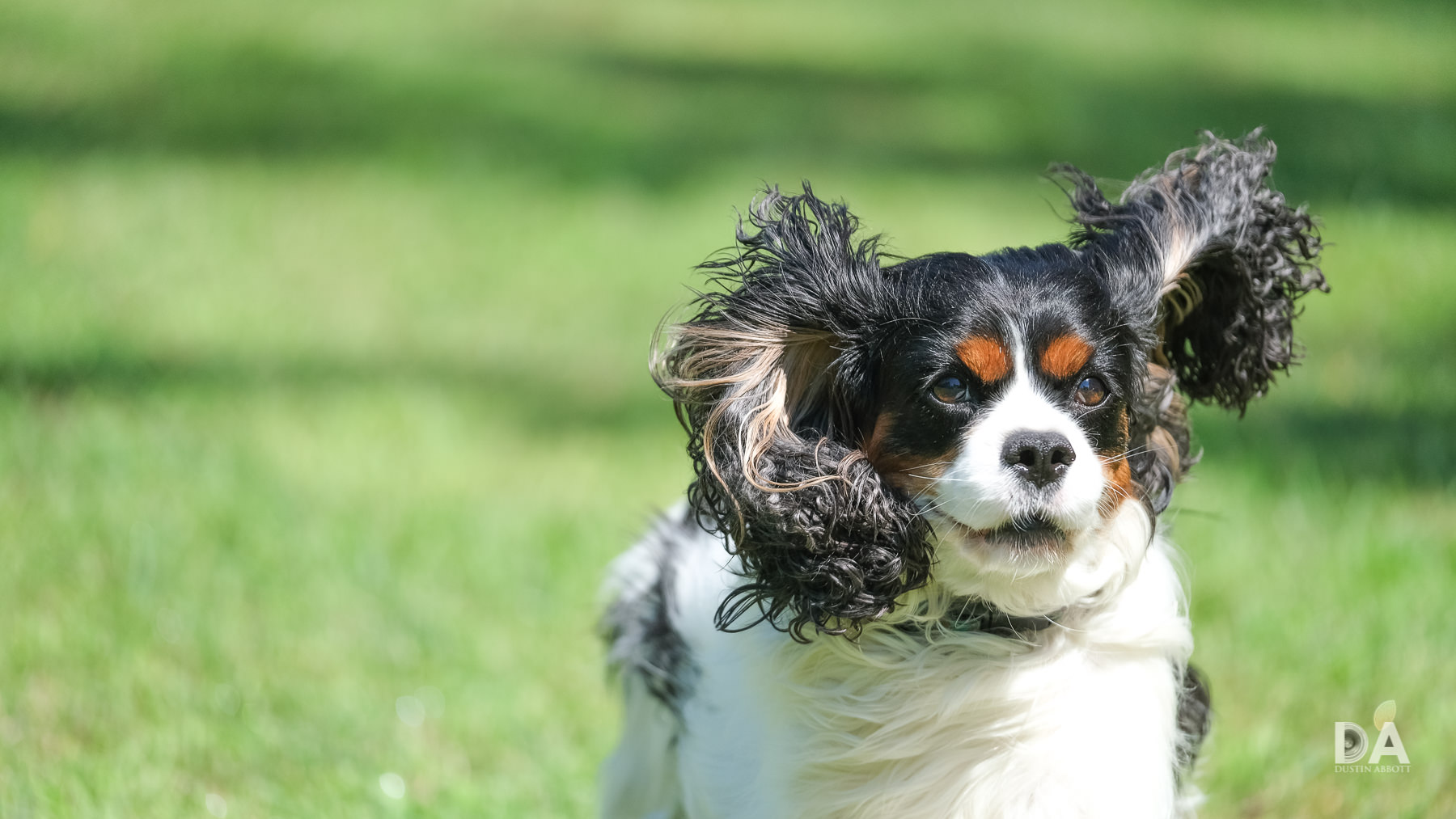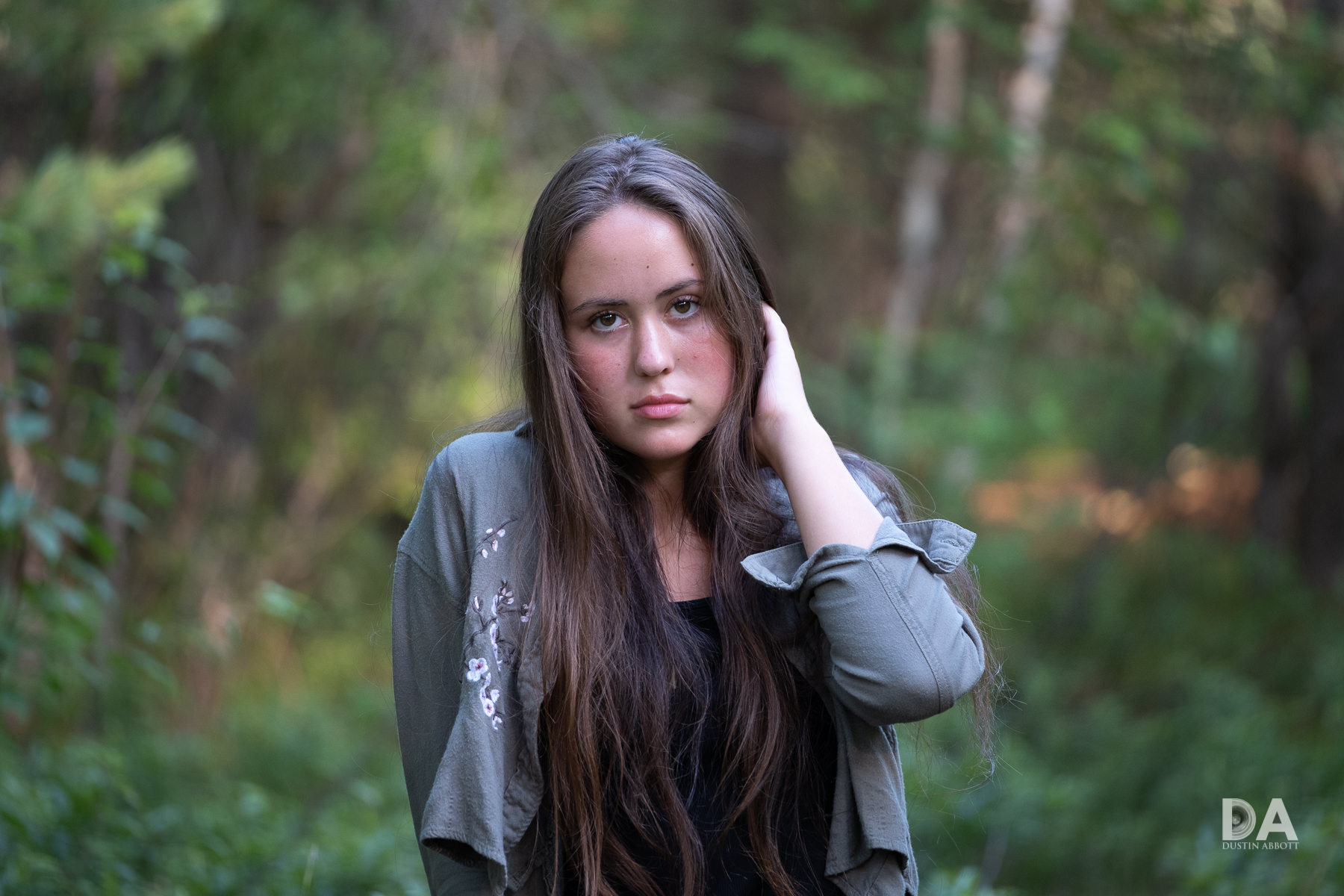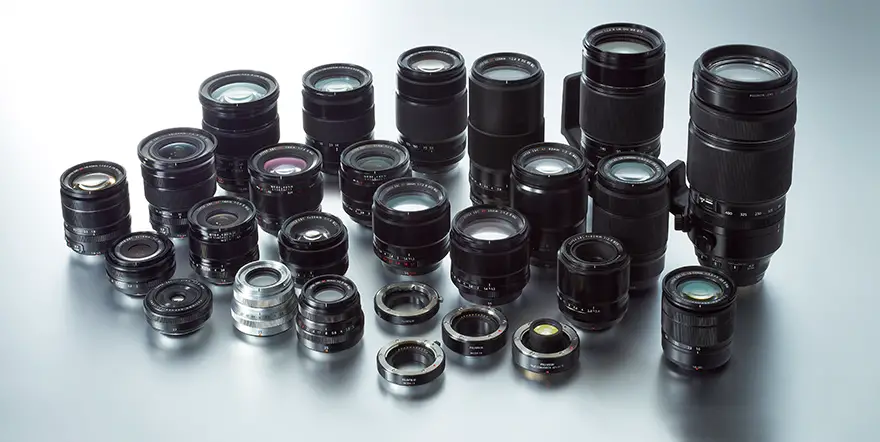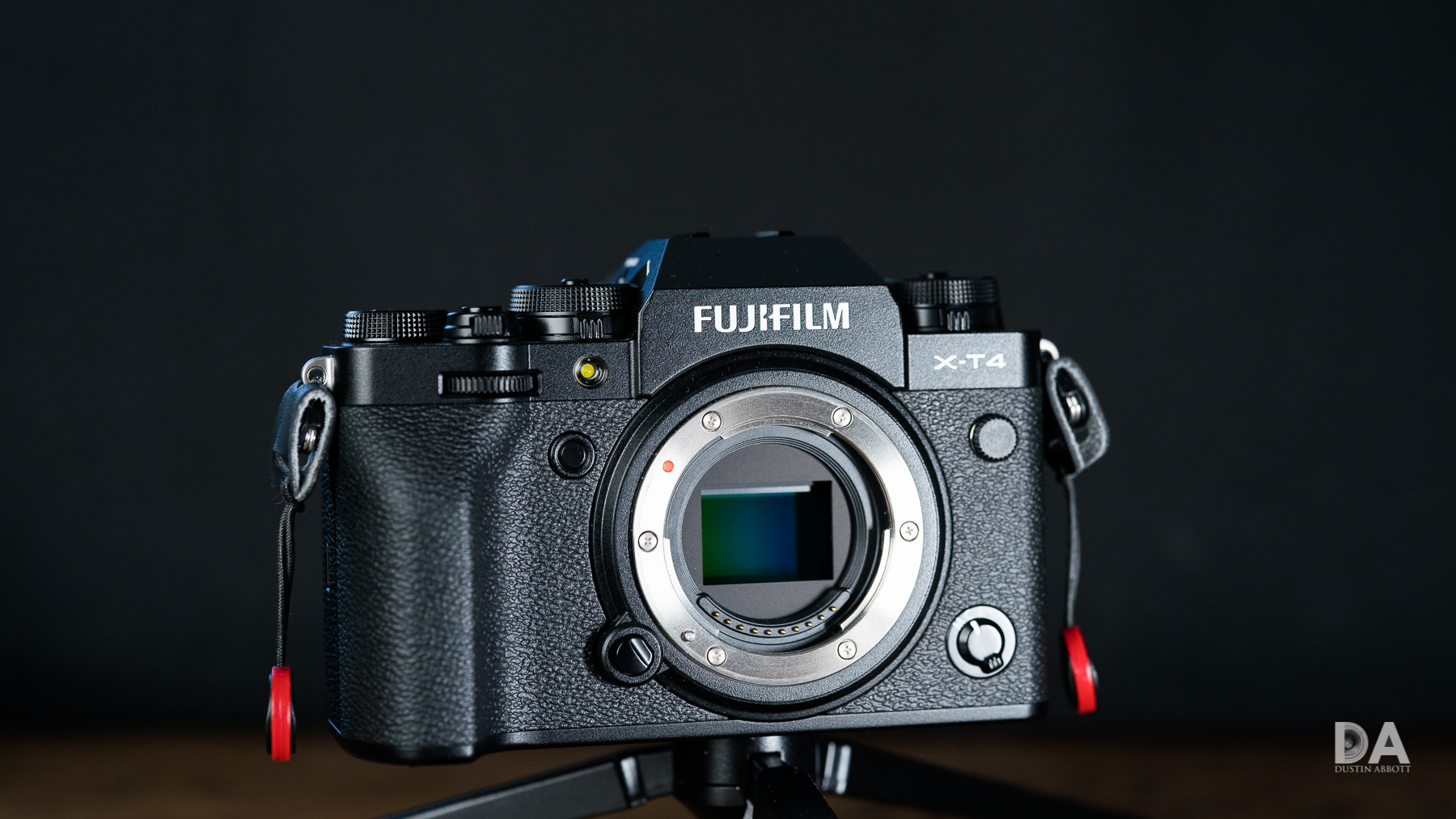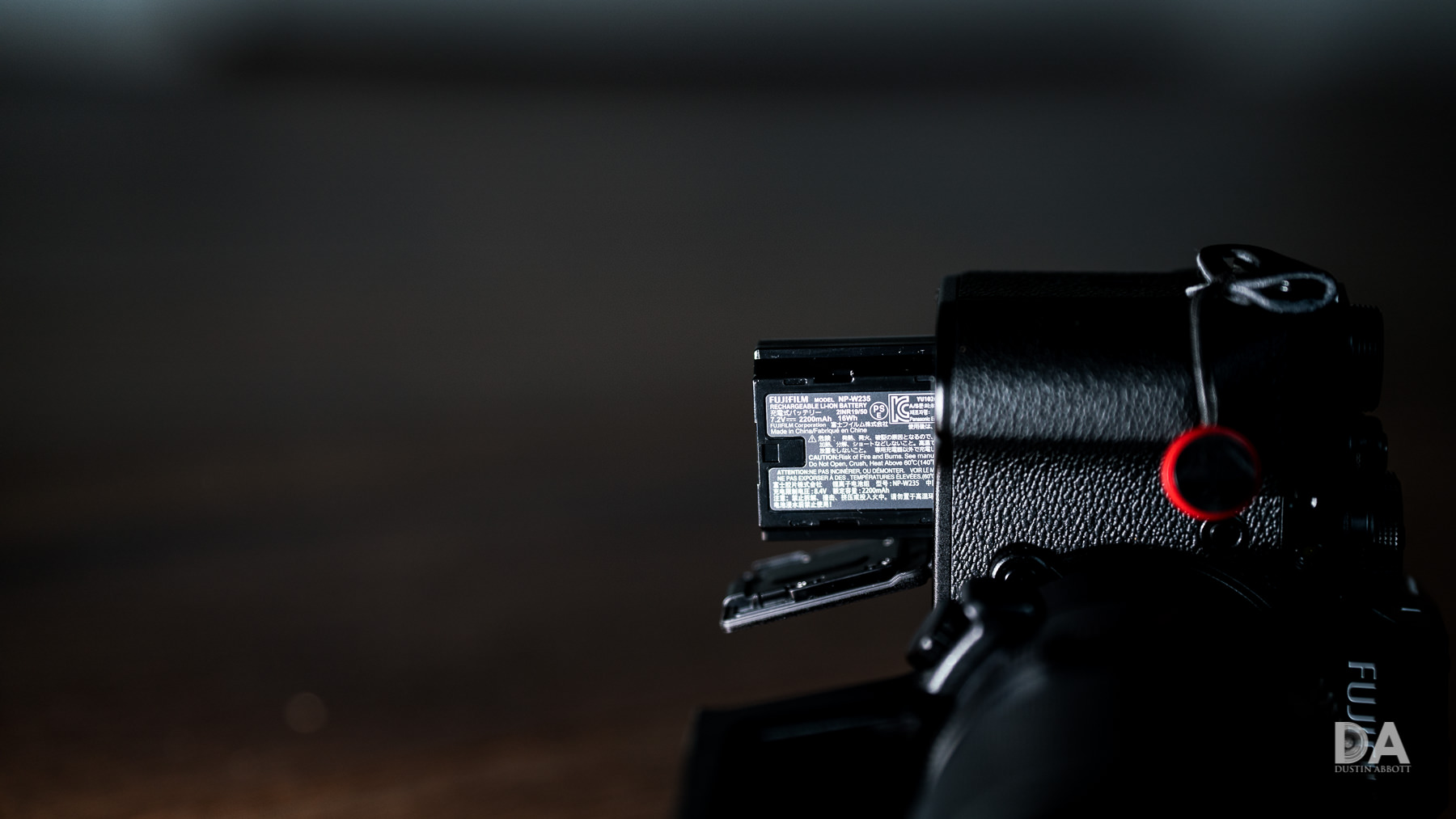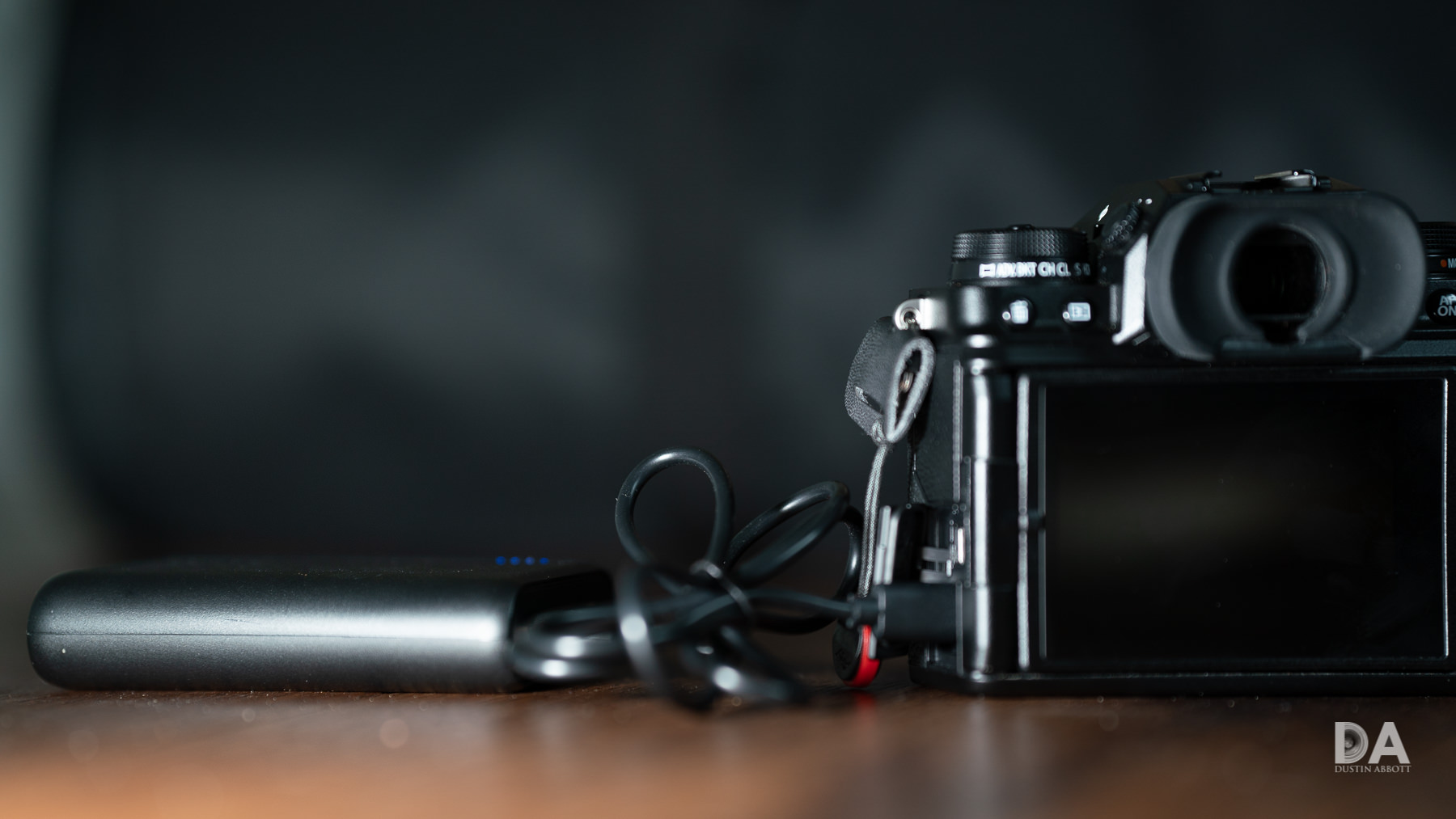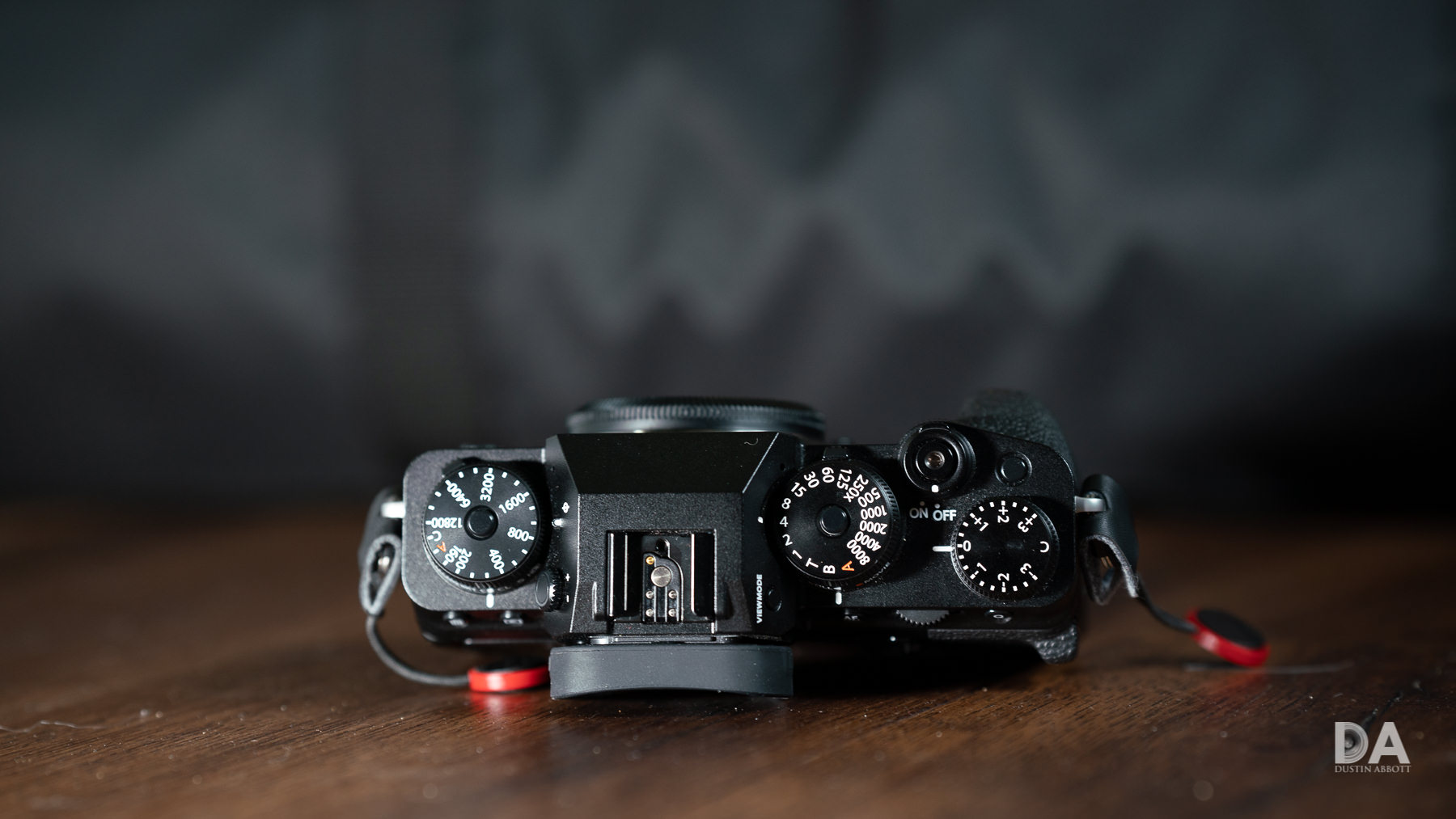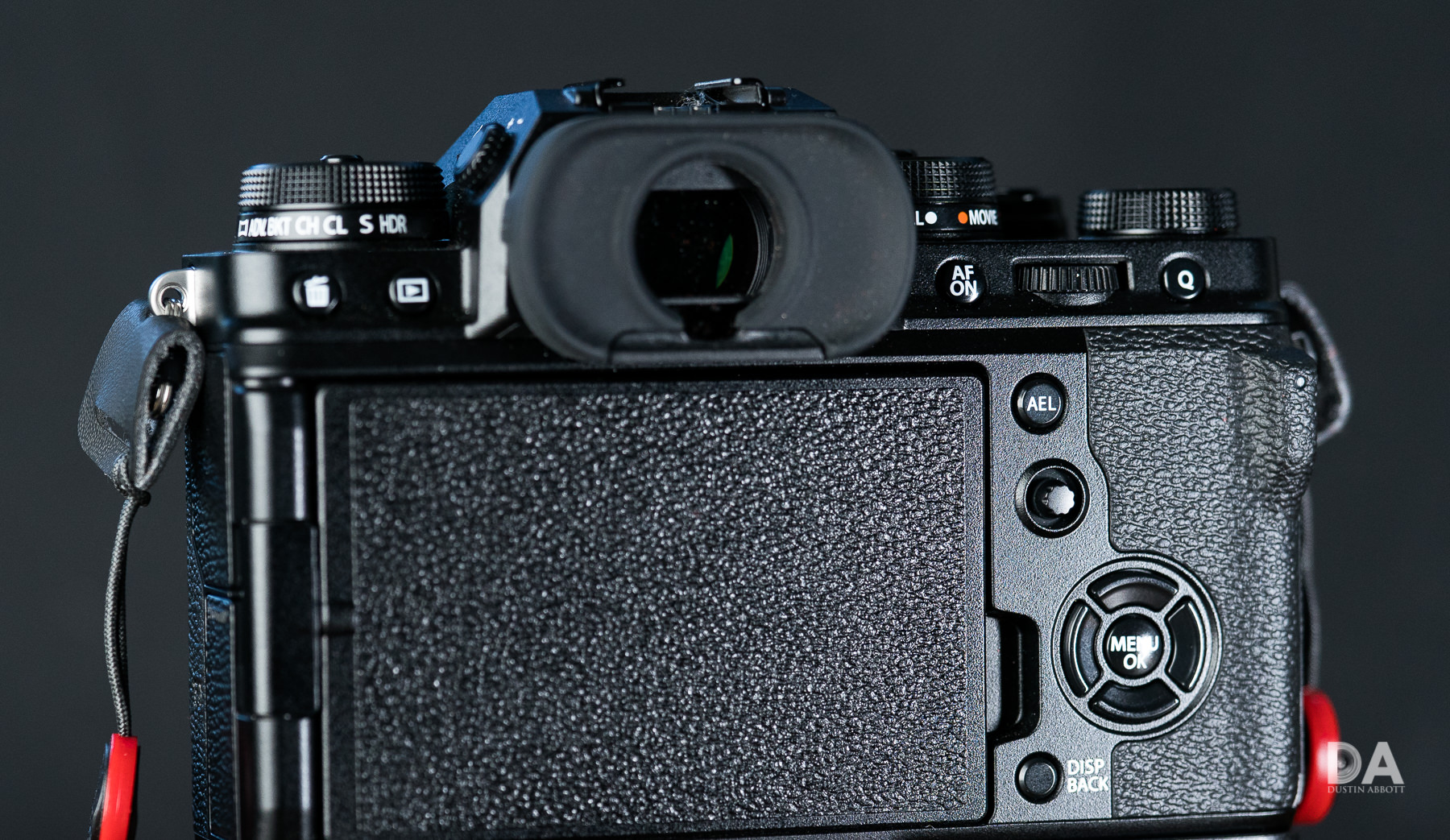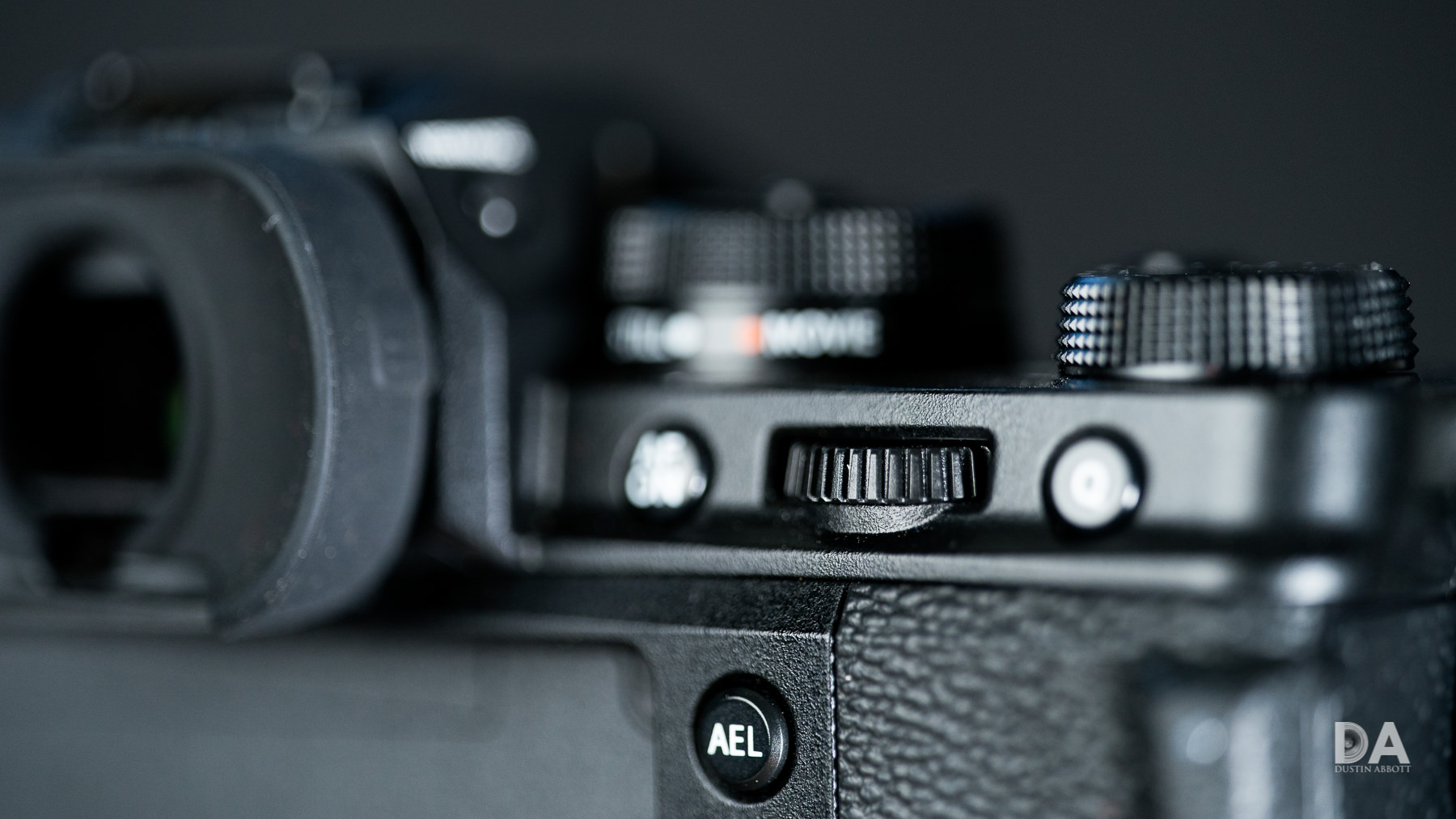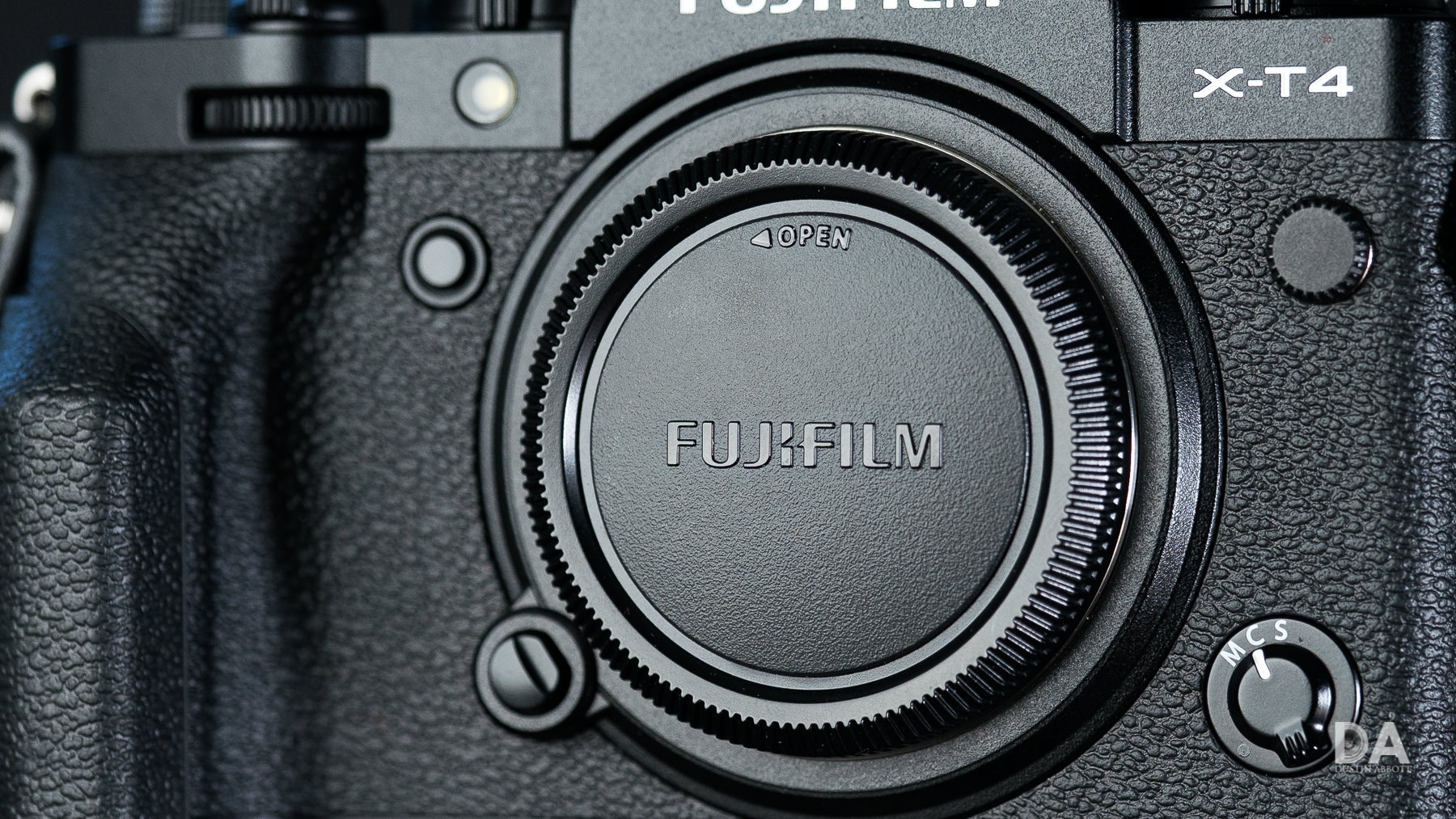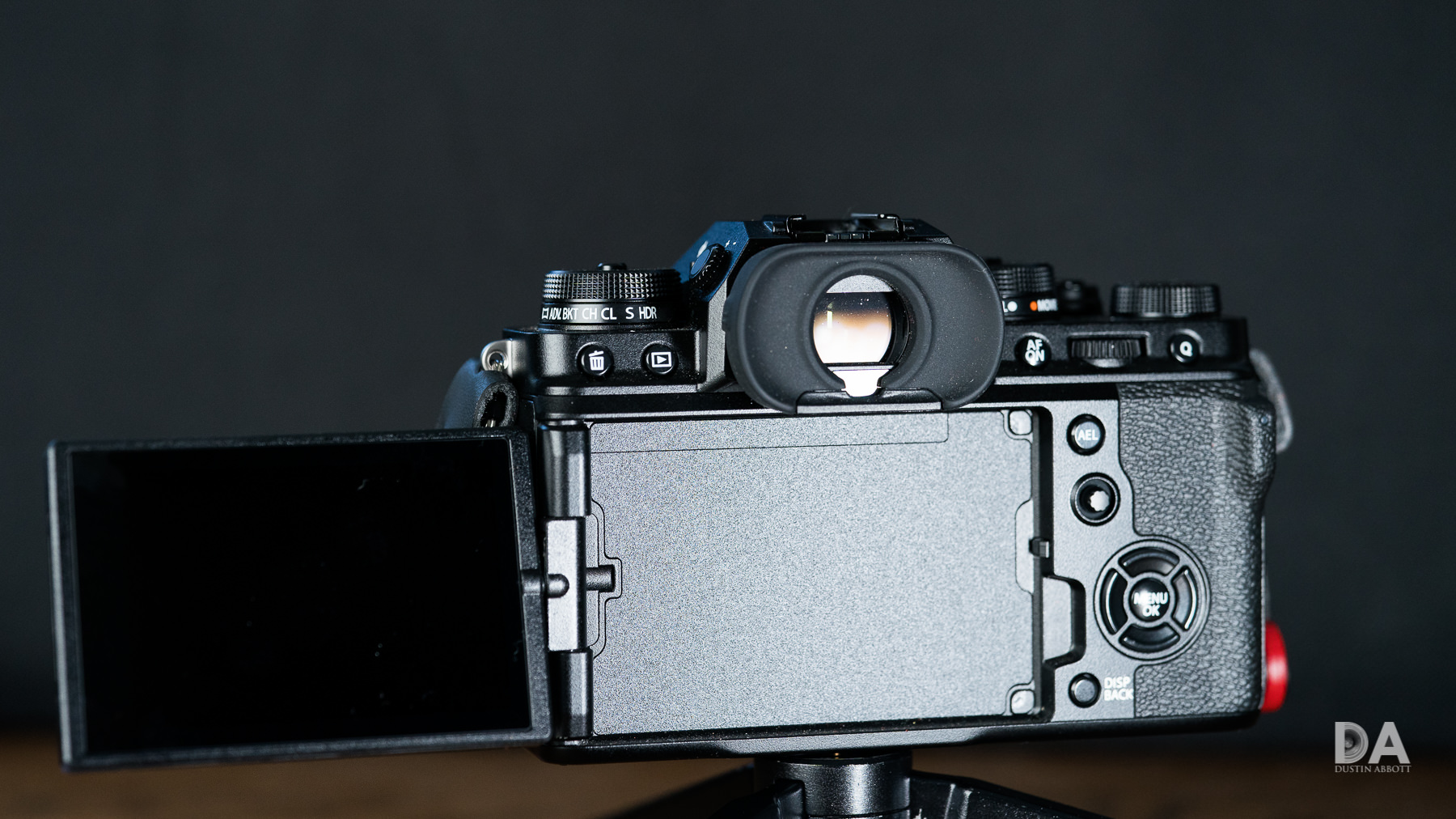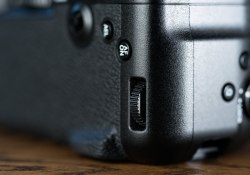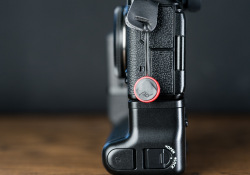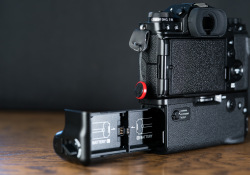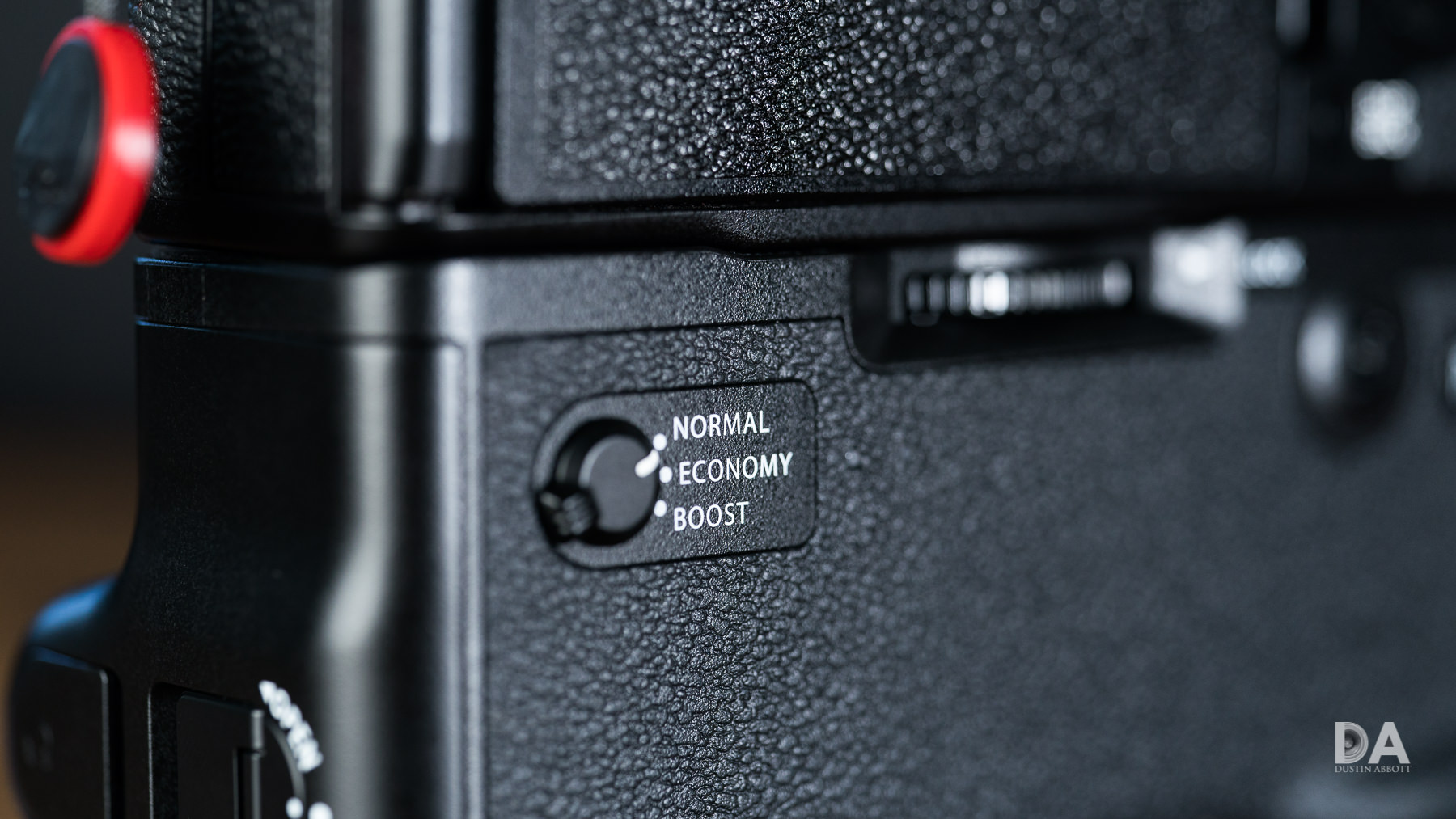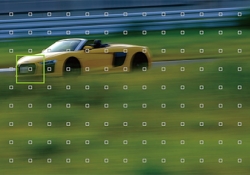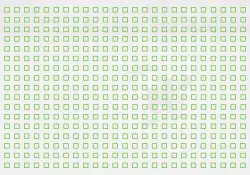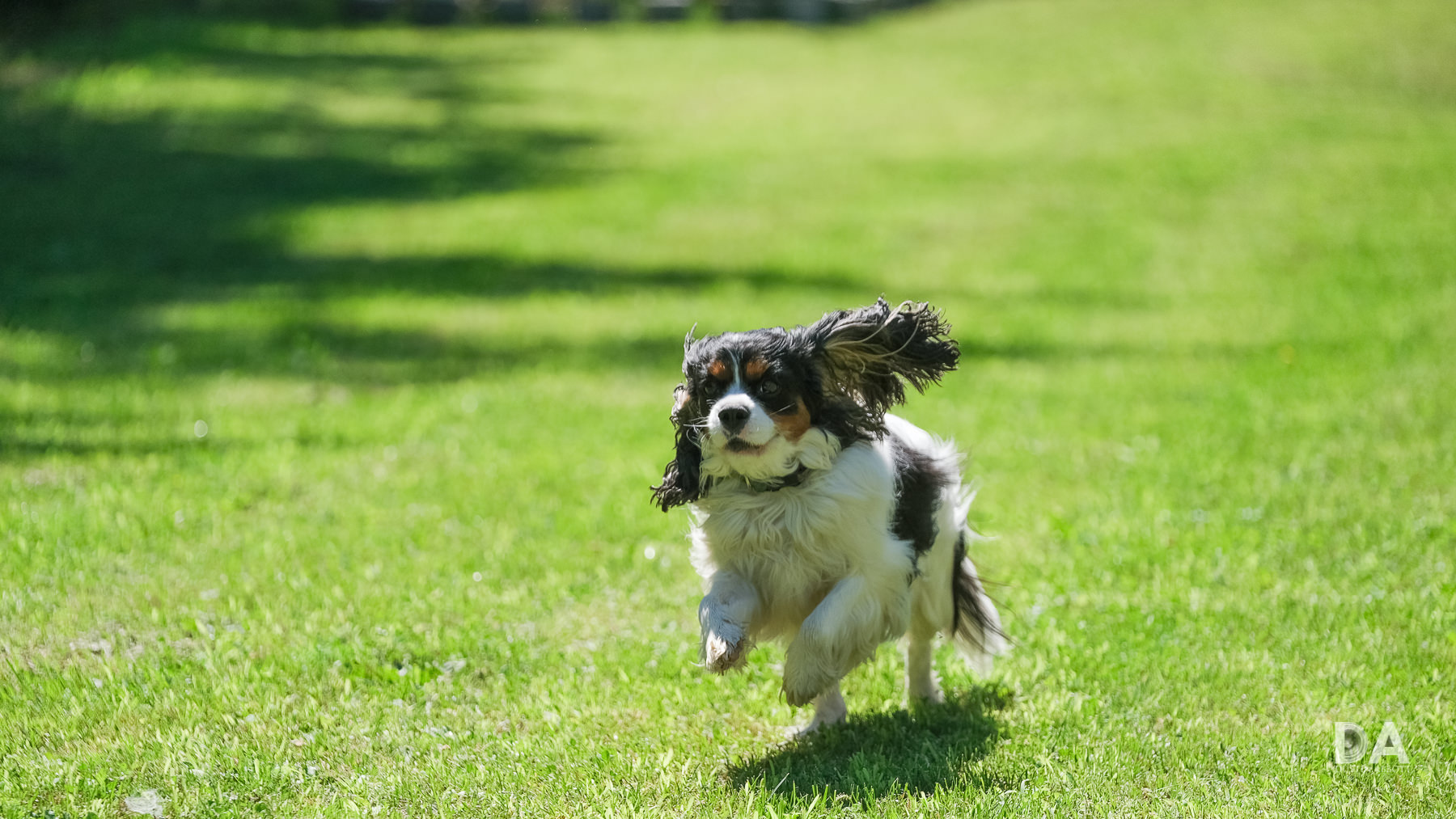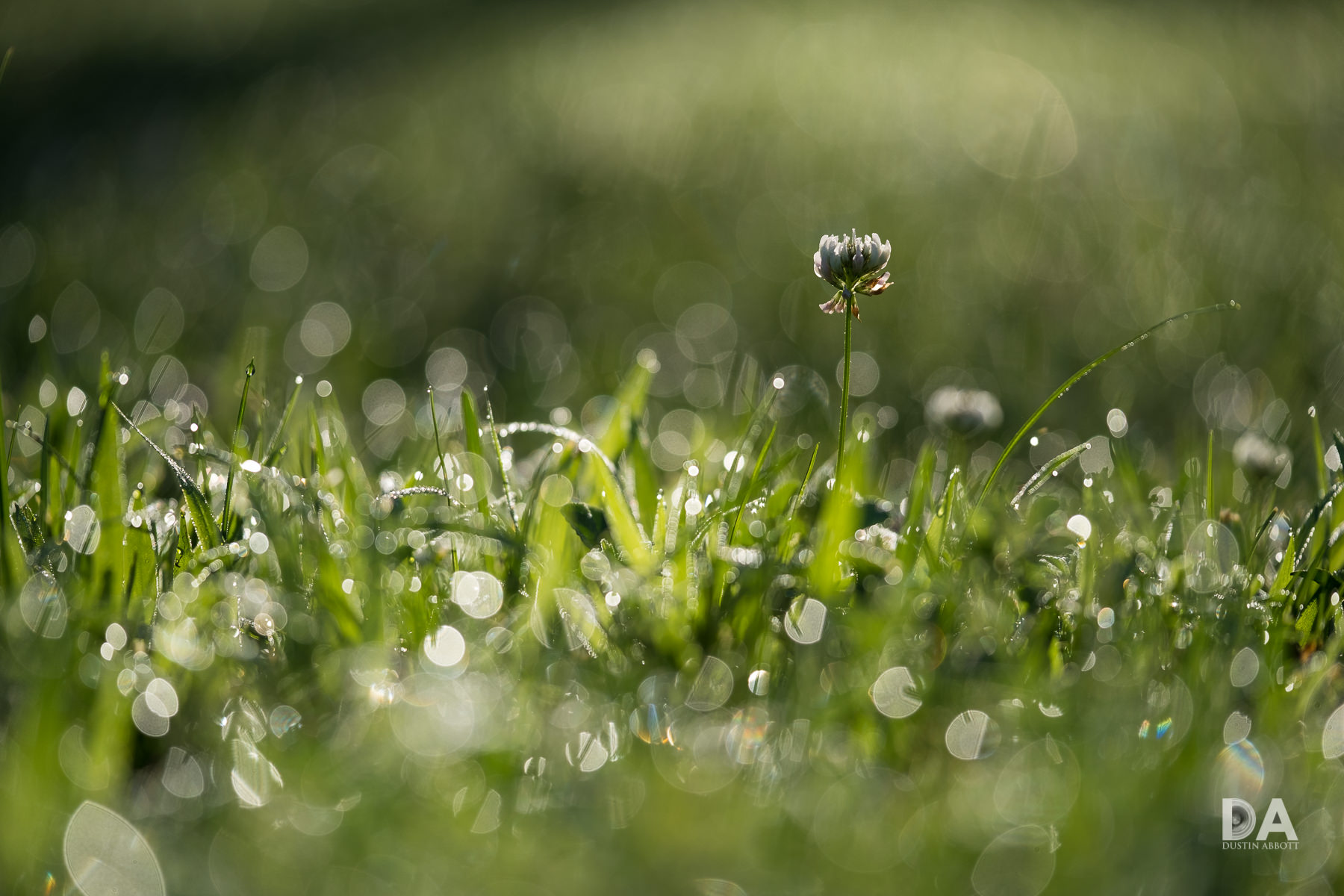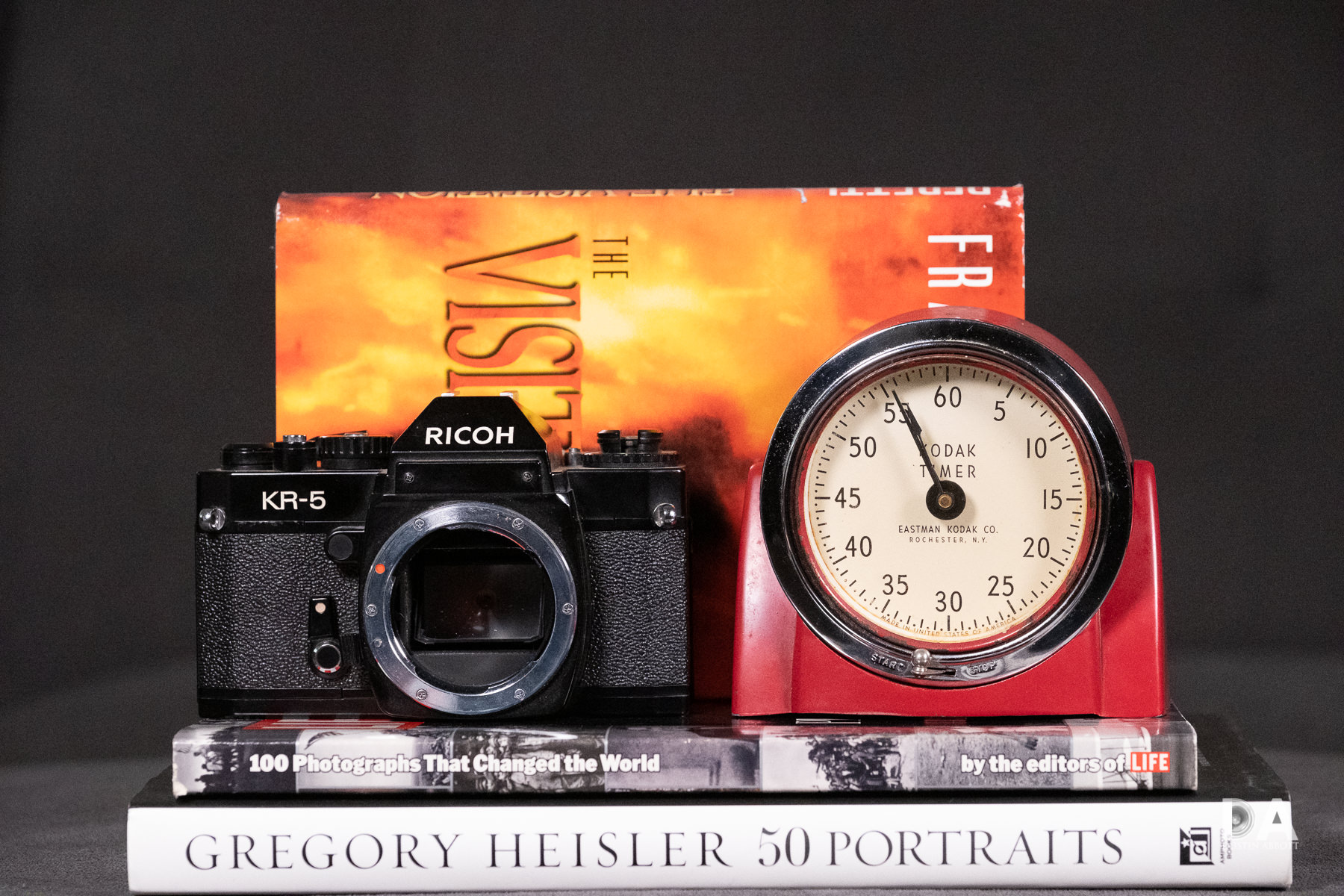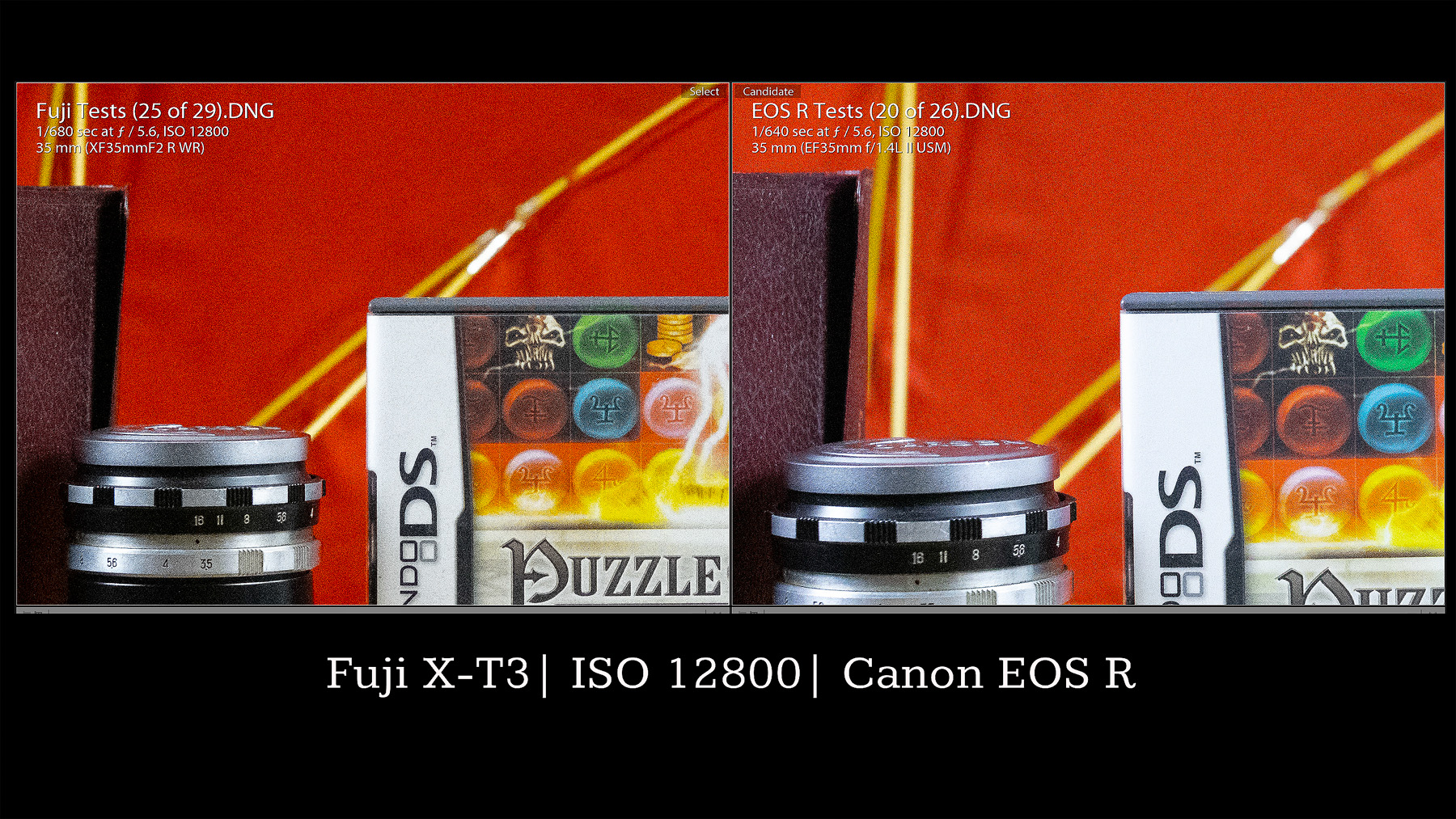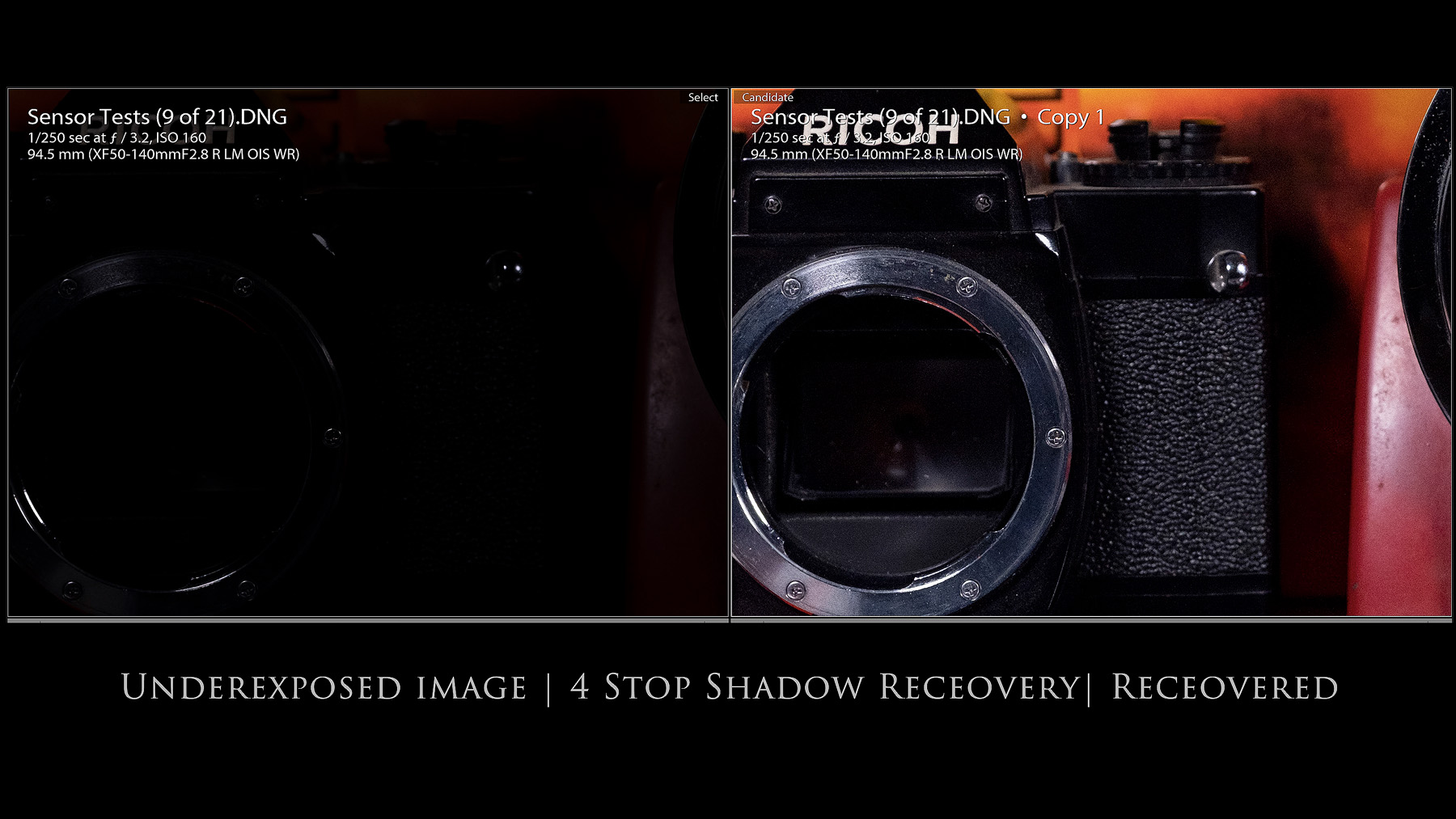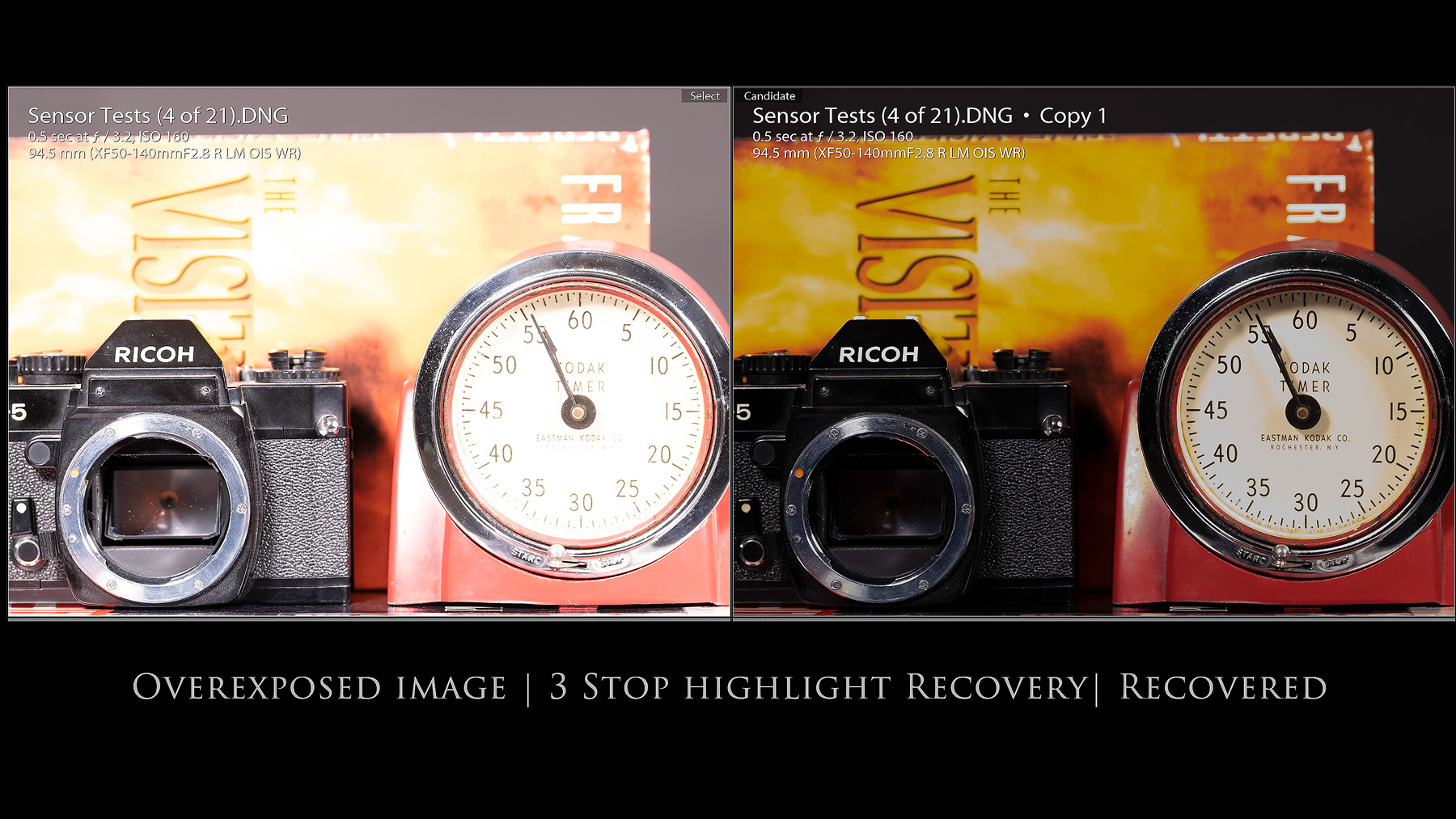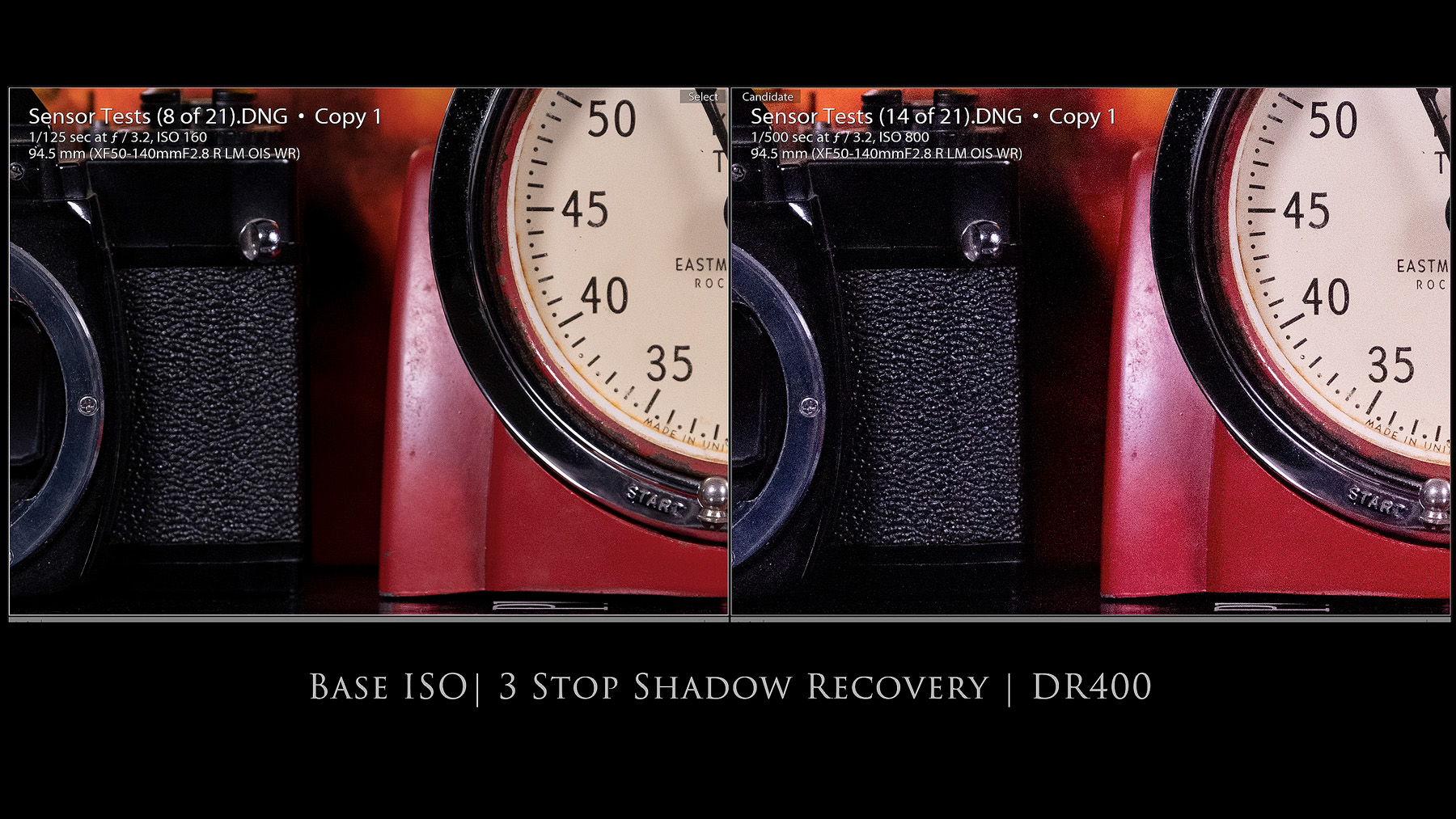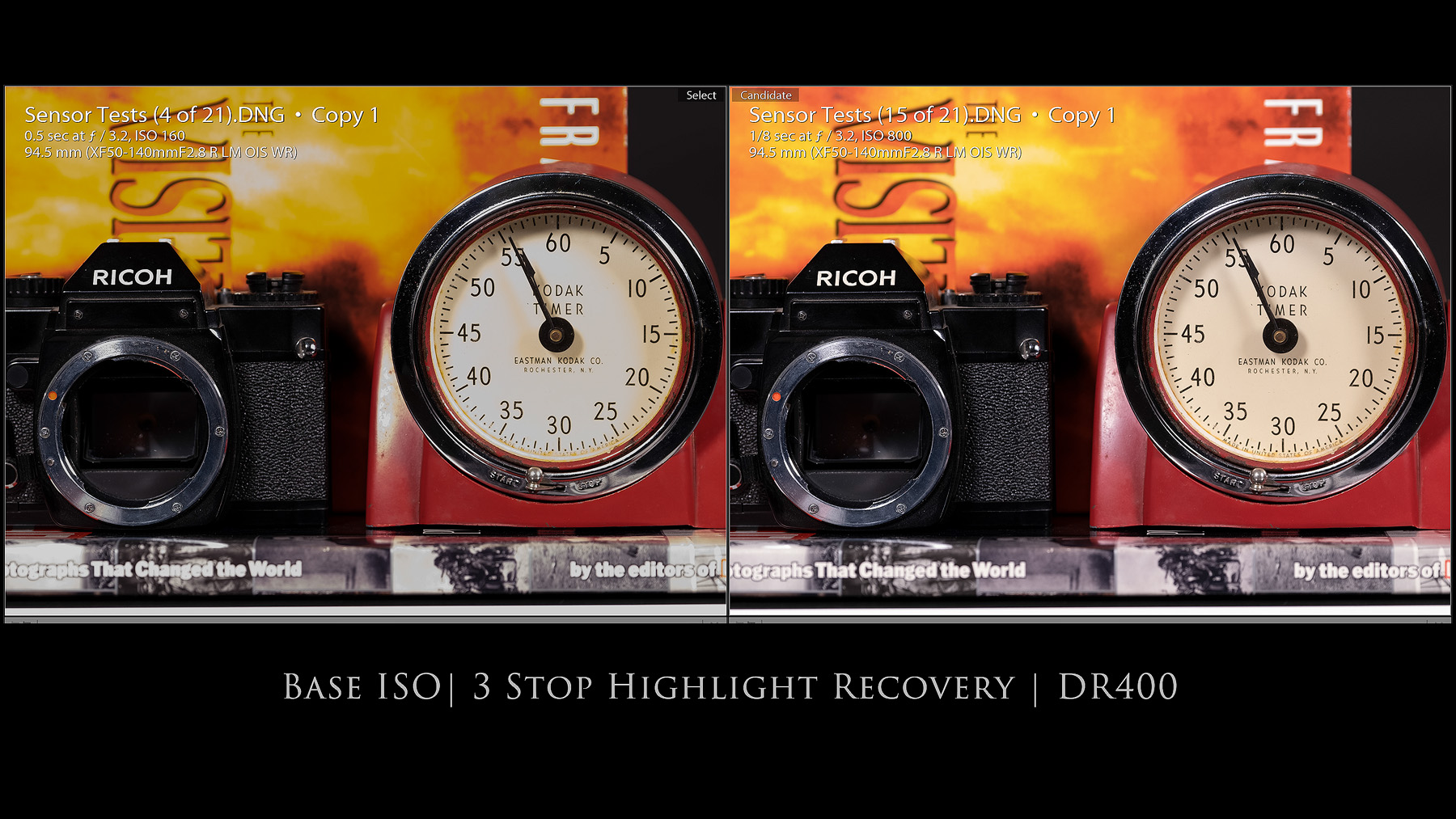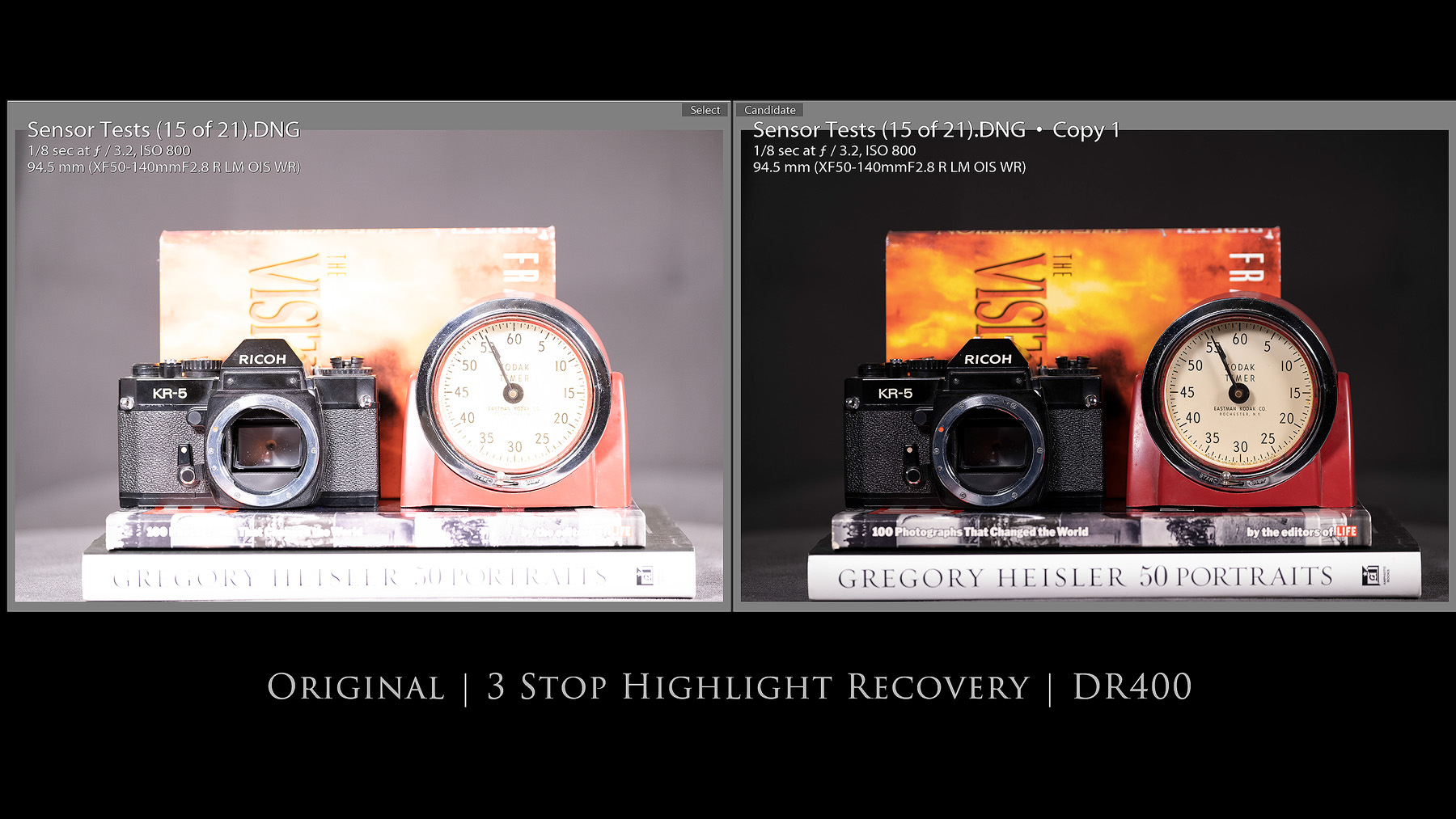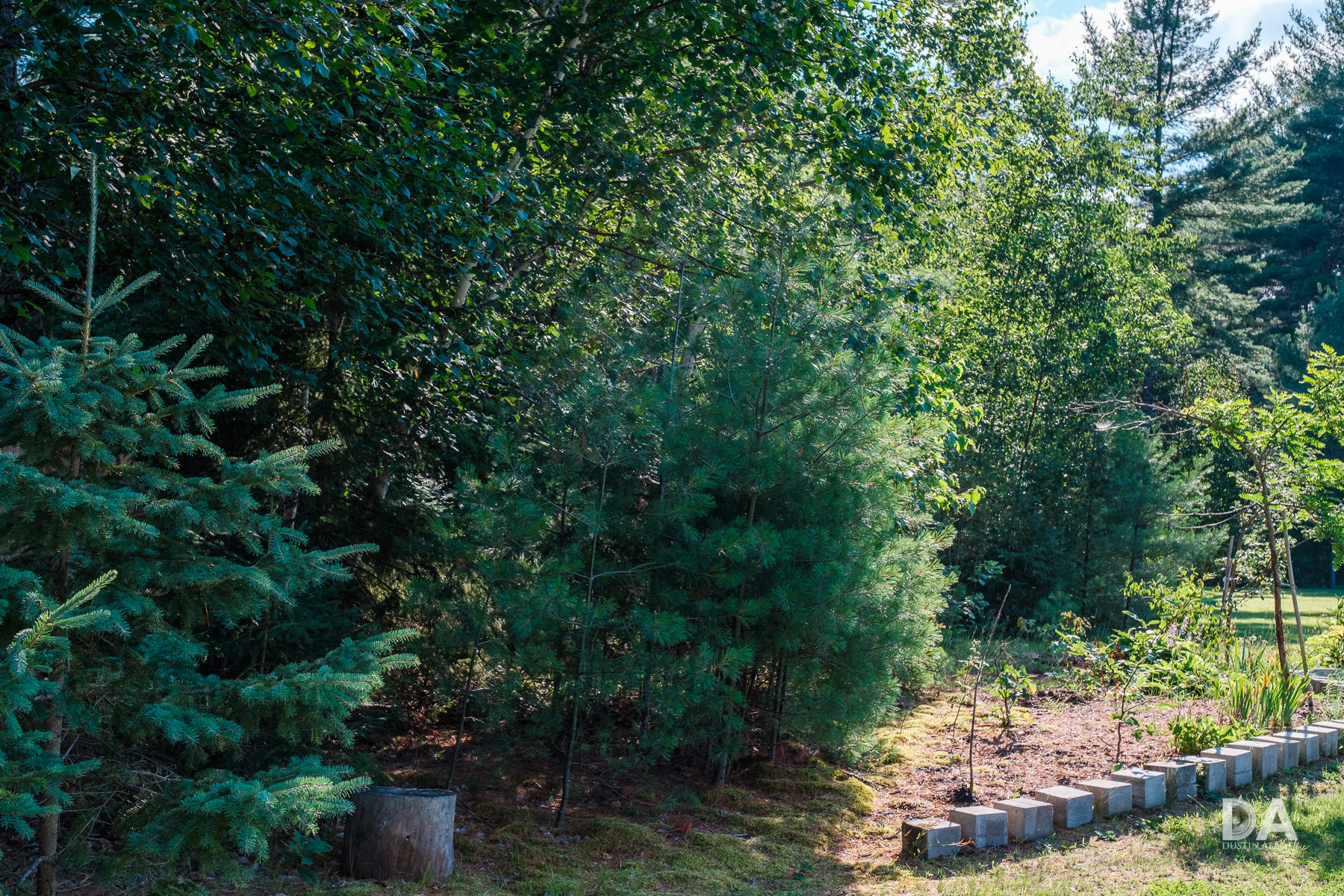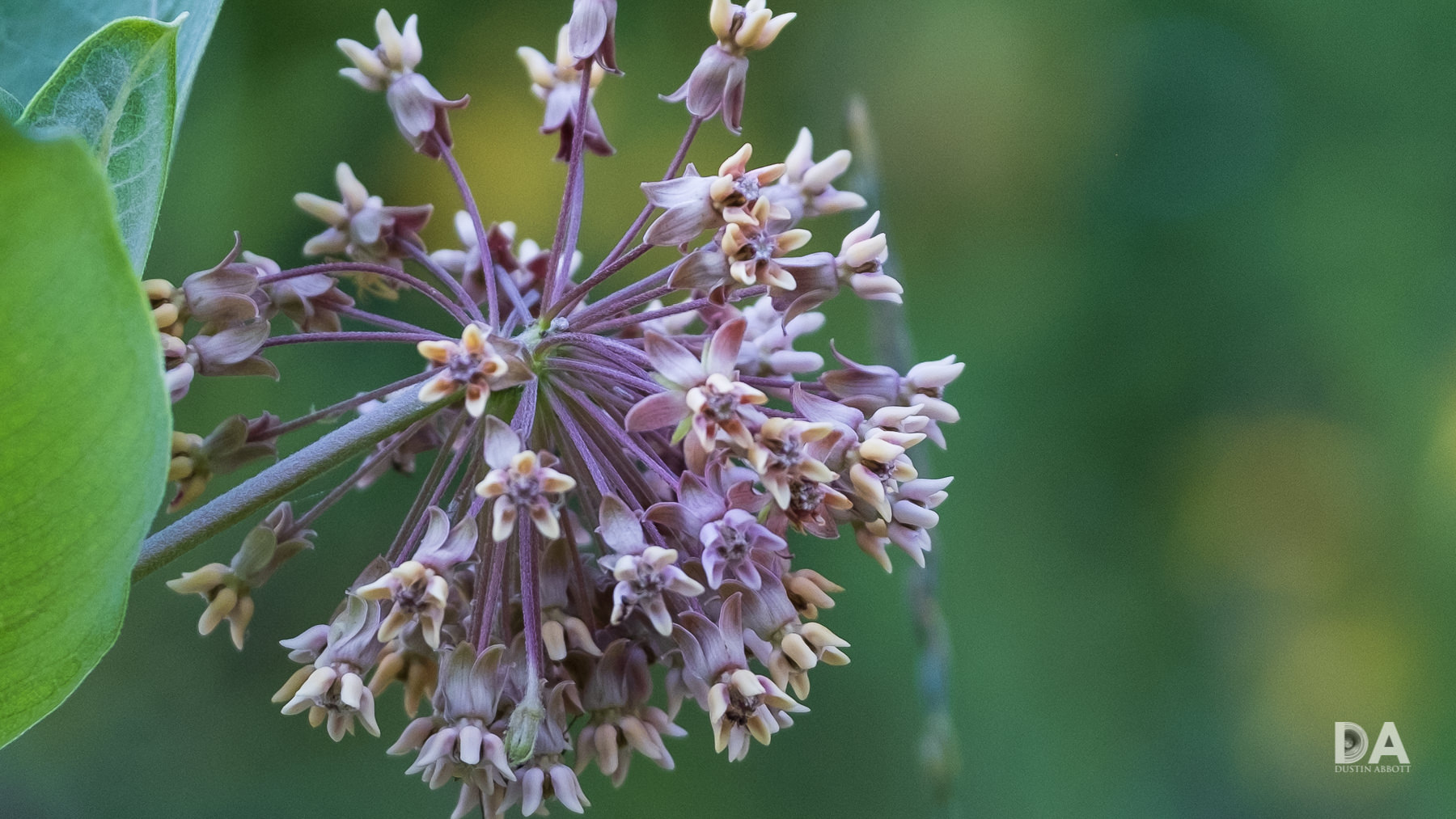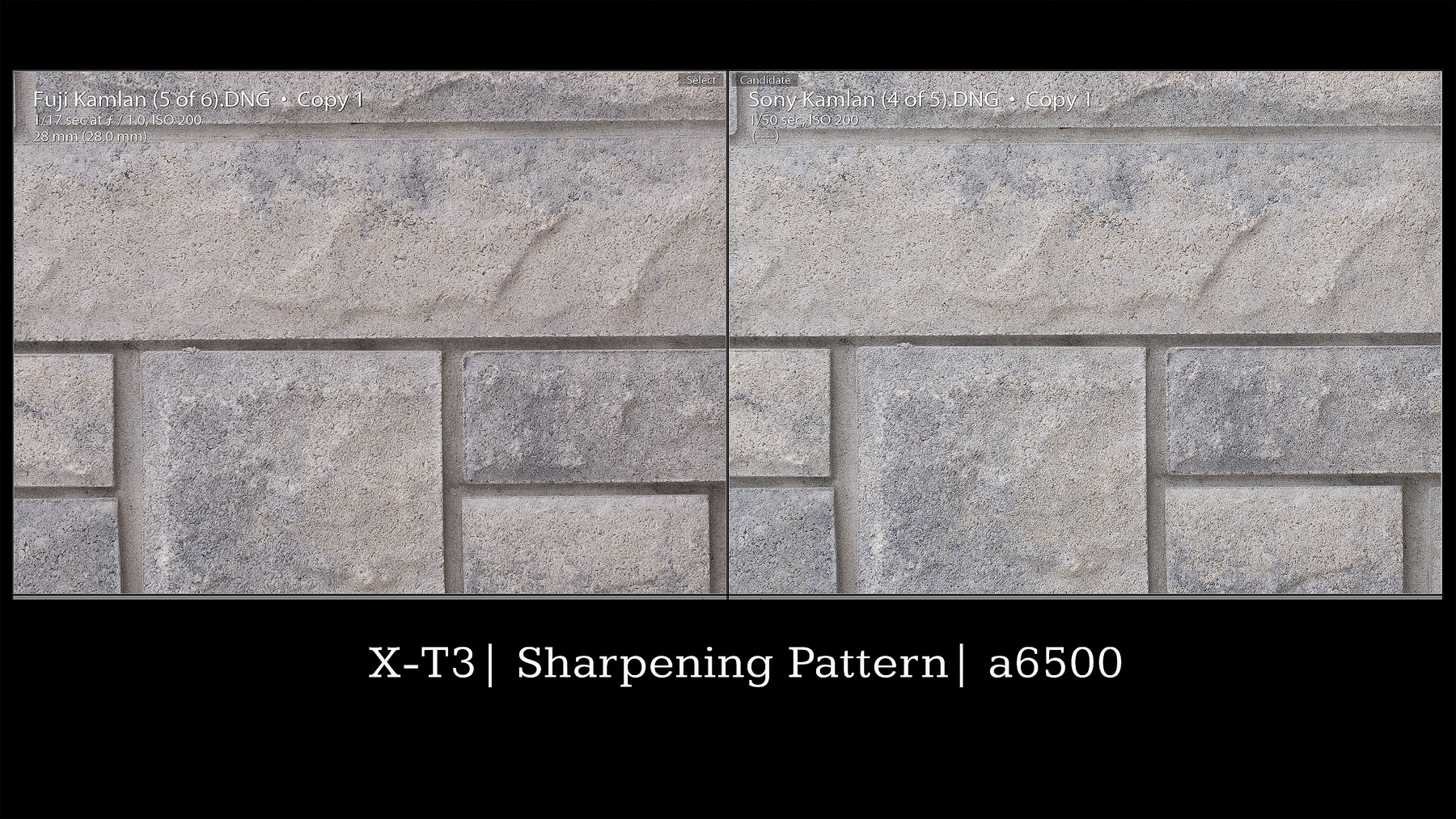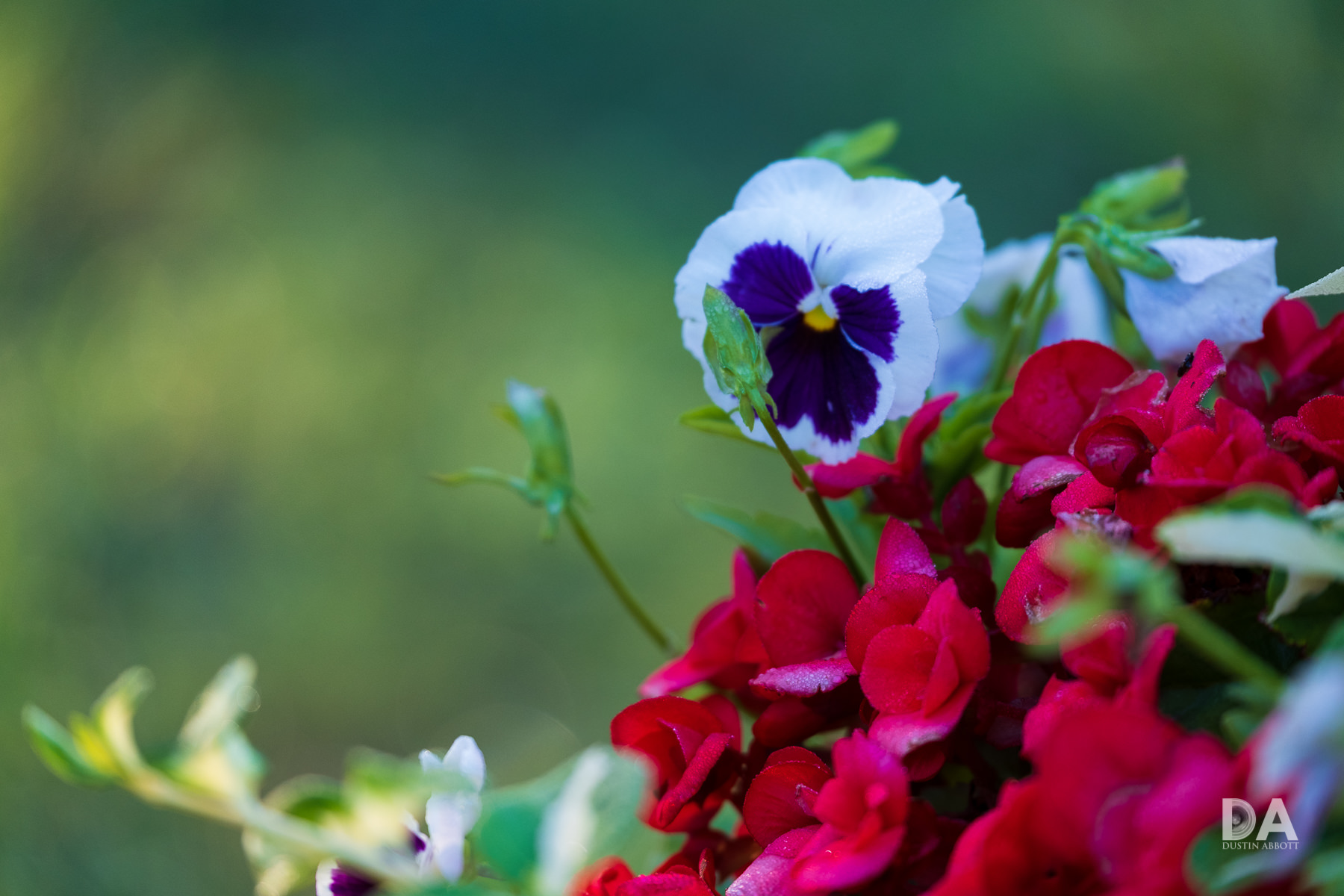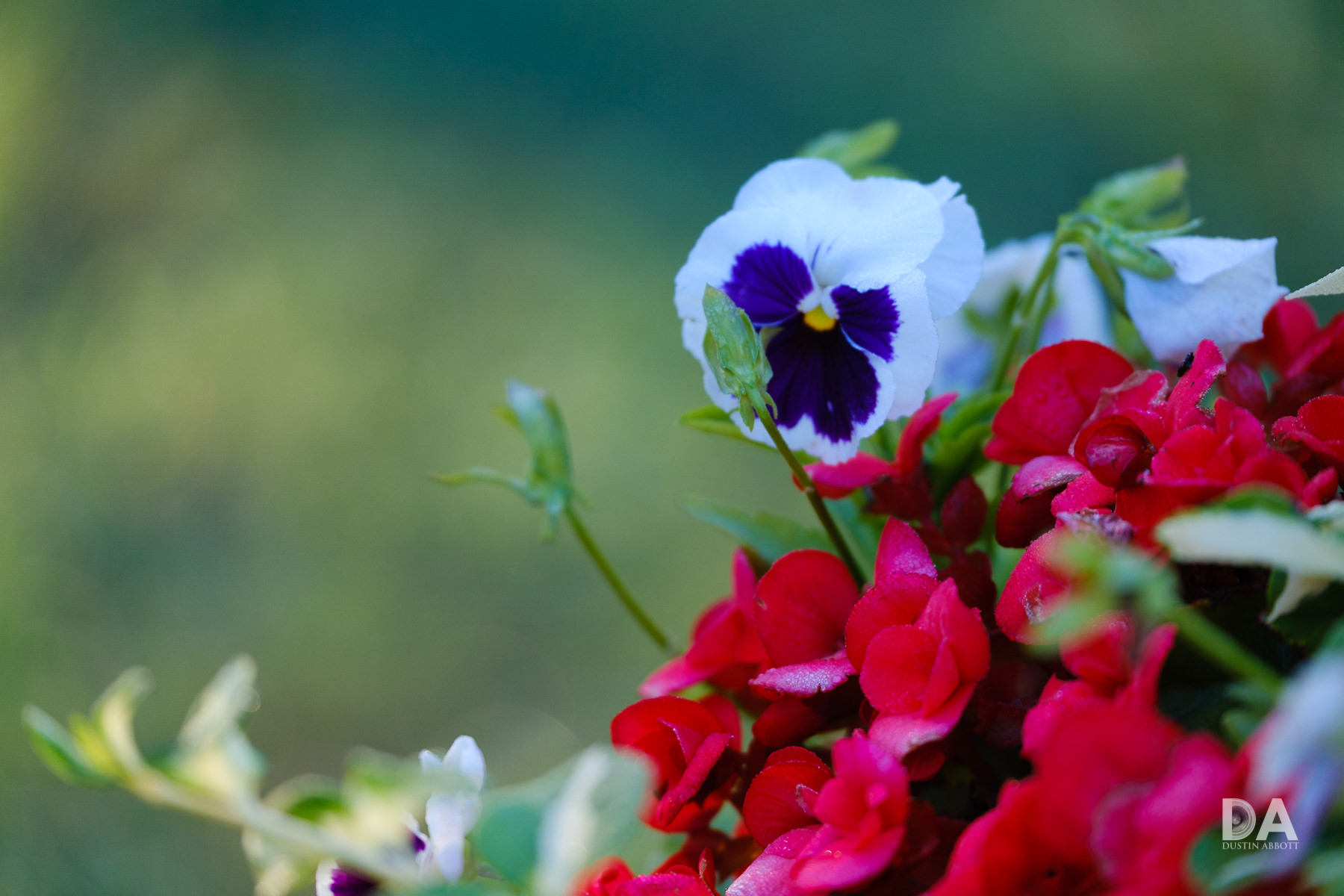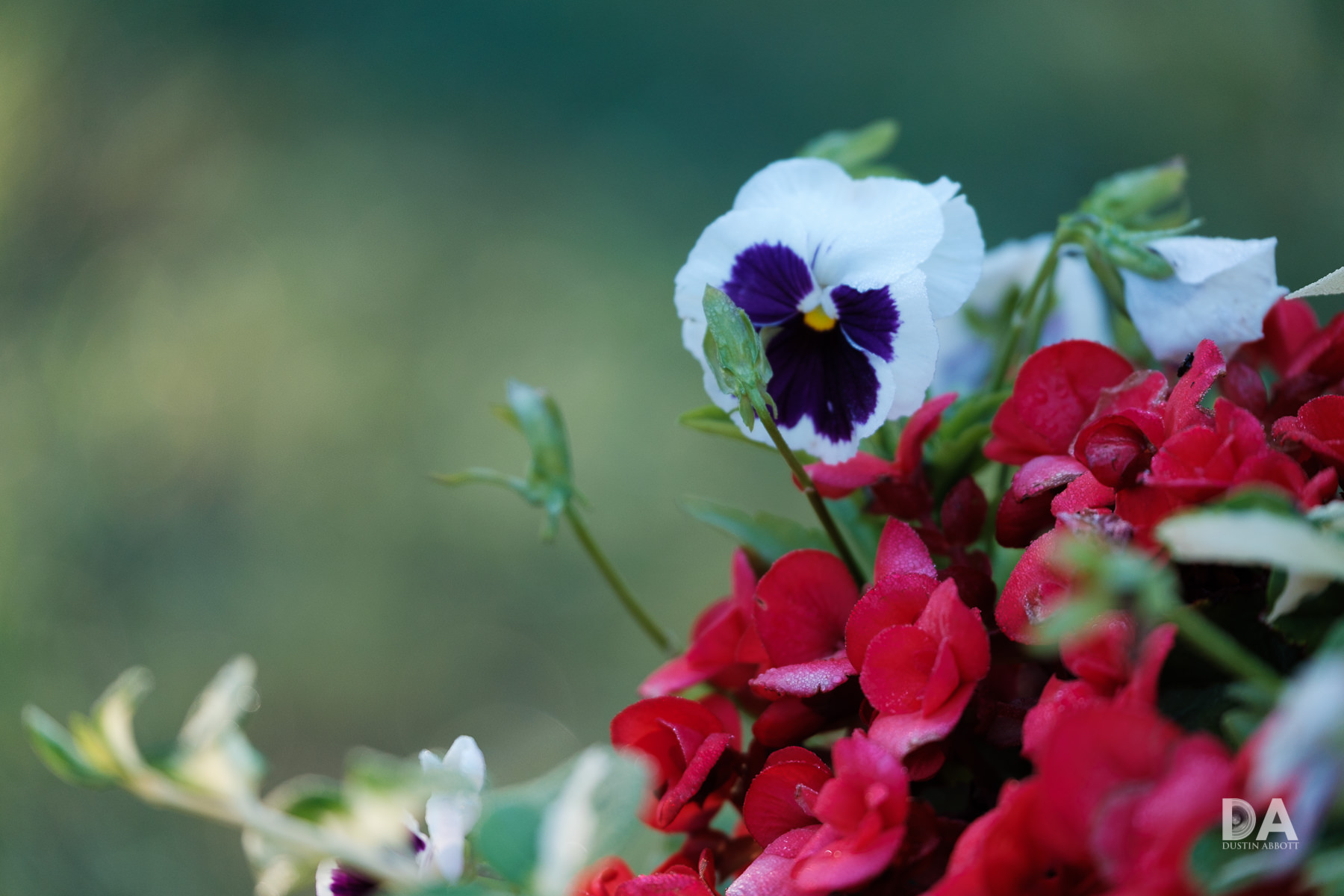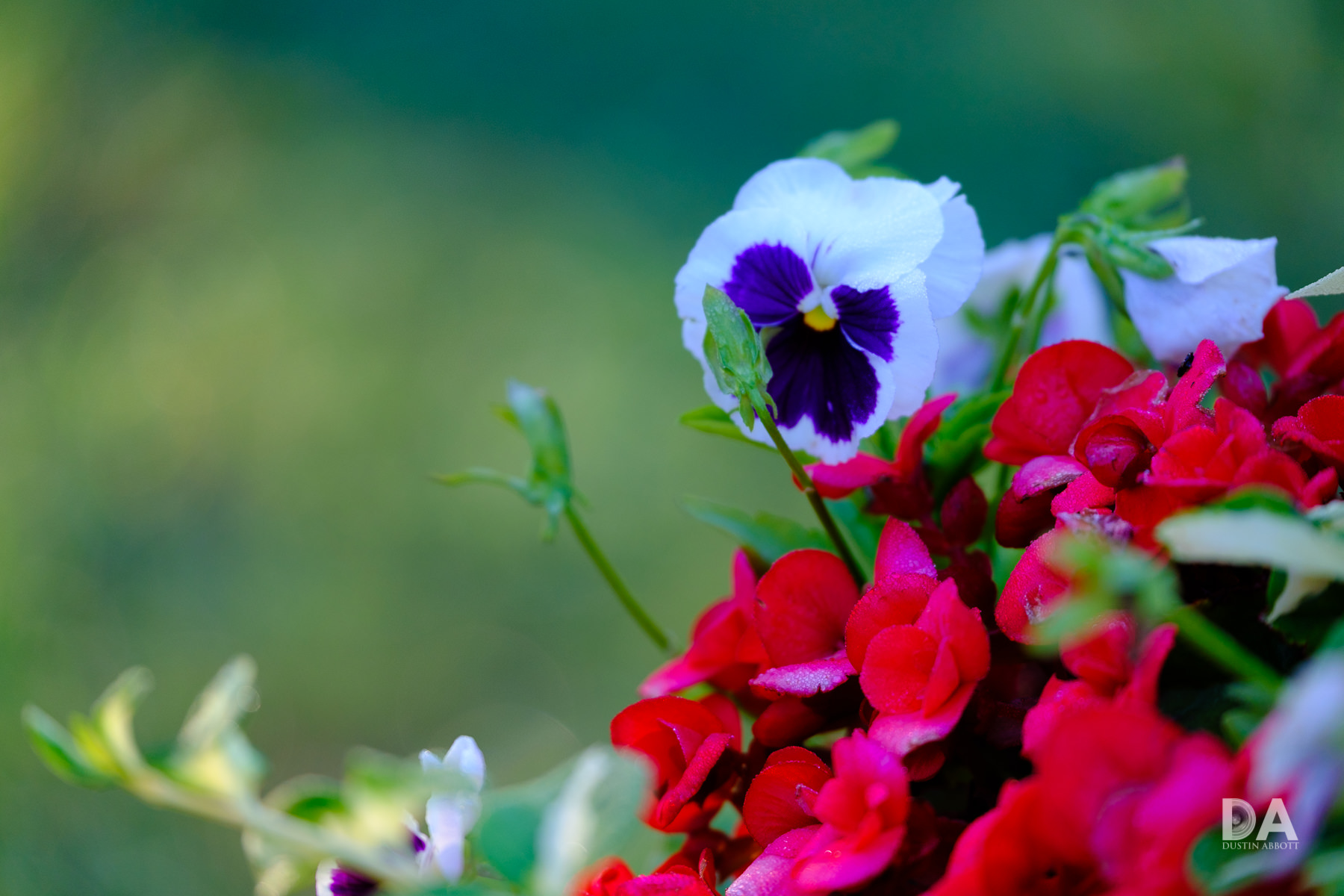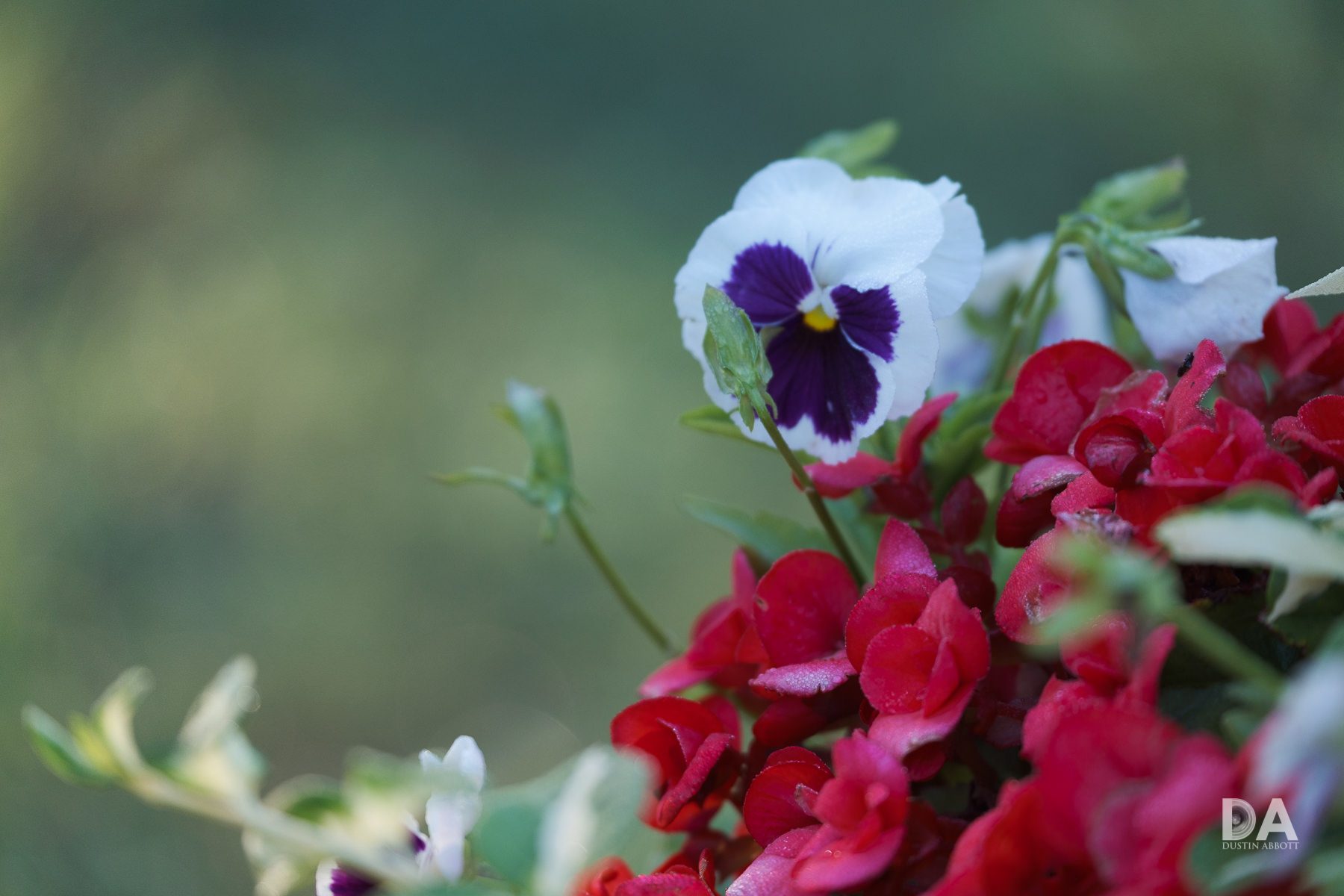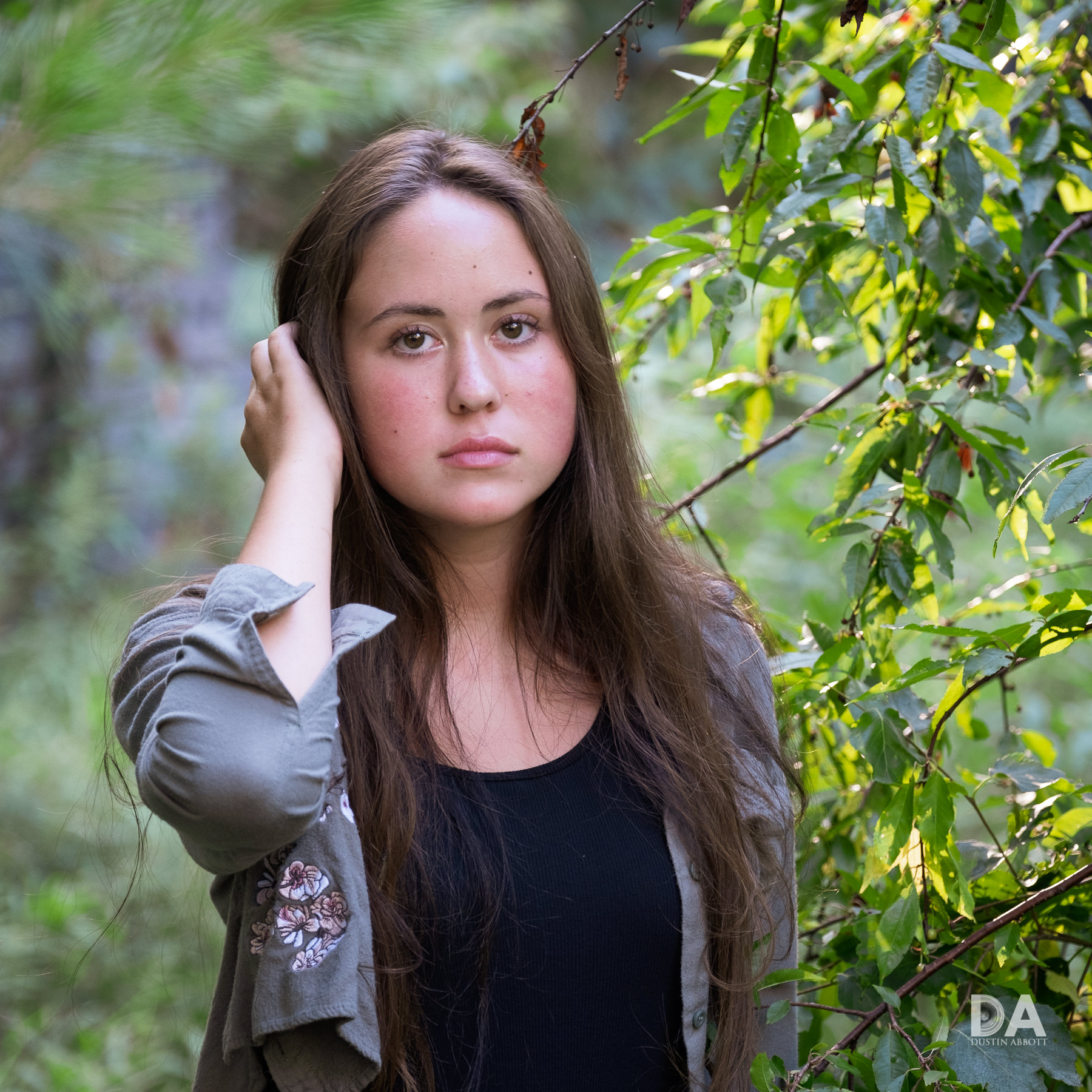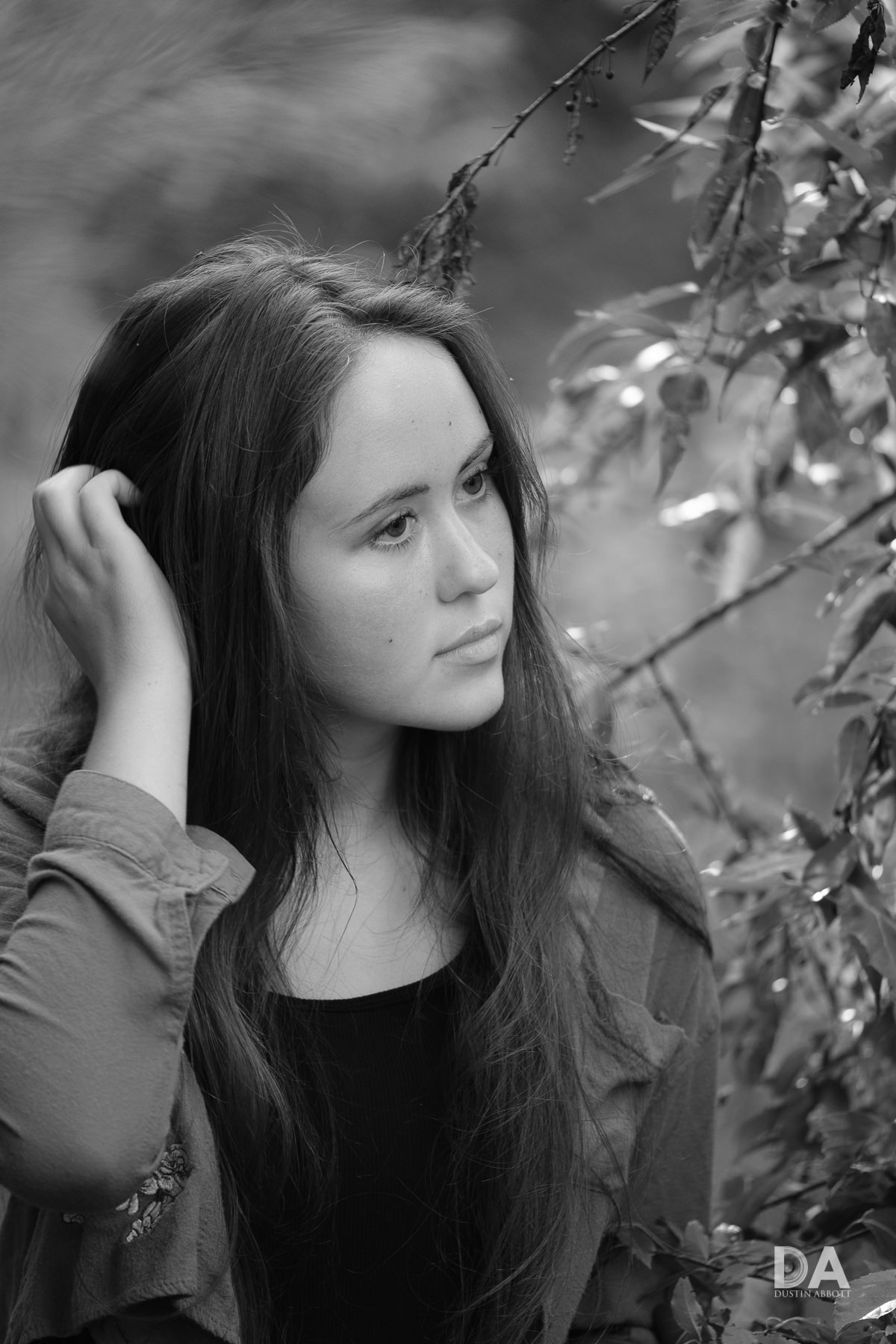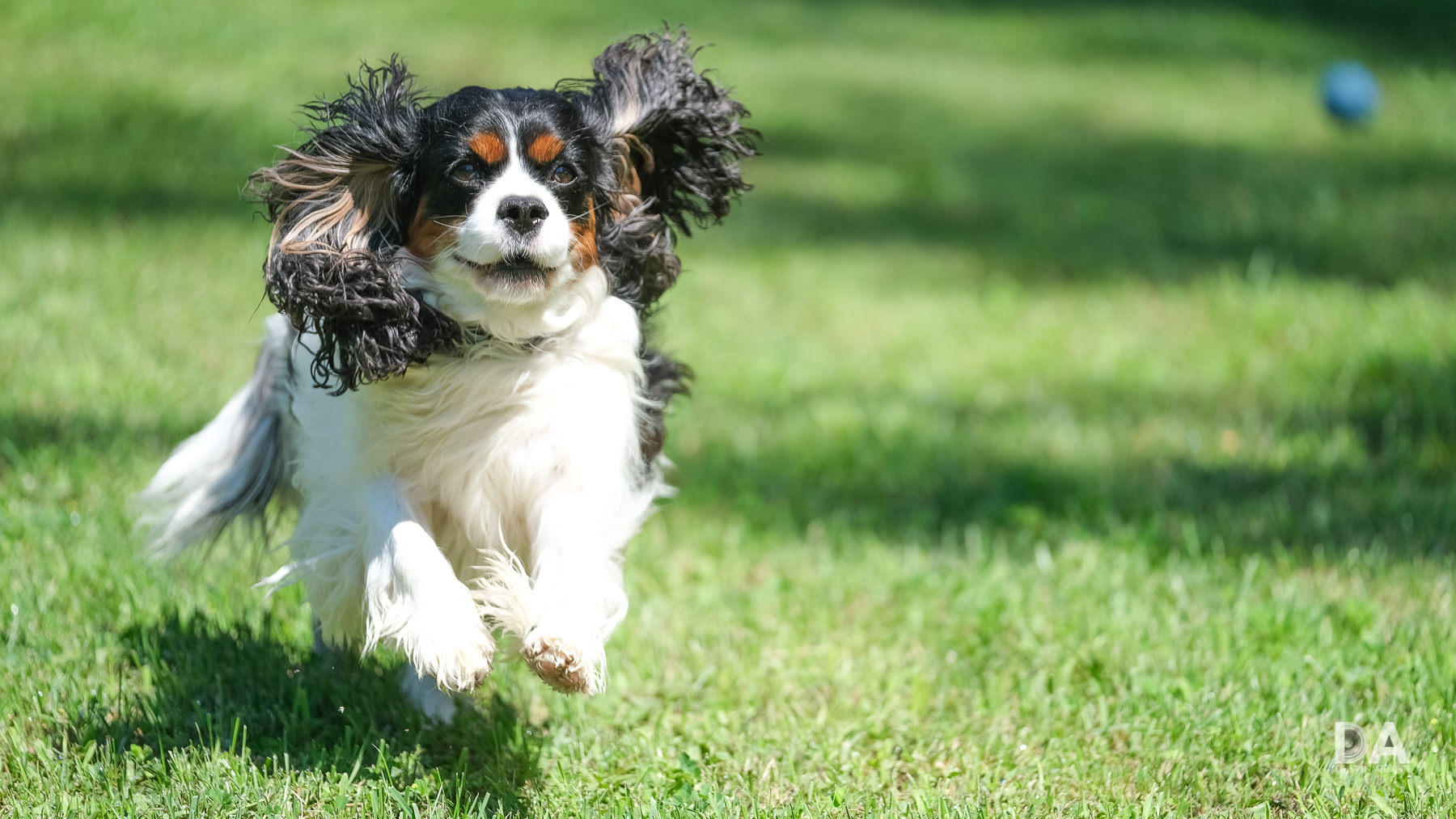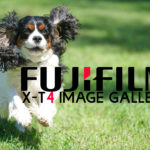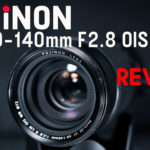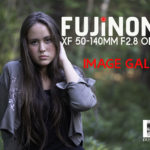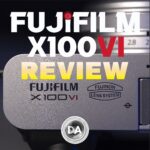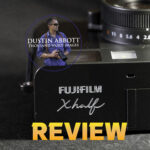When I finished up reviewing the Fujifilm X-T3 in late 2018 (my first Fuji review), I praised it as the most well-rounded APS-C camera I had used. Its amazing burst rate, excellent tracking abilities (with the right lens!), and solid sensor performance really set it apart for me. I longed for the inclusion of in-body-image-stabilization (IBIS) to help the Fuji lineup be more competitive with Sony’s offerings. Since that point, of course, Nikon has released mirrorless cameras with IBIS and now (finally), Canon is joining the game too in the new EOS R5 and R6 cameras. But Fuji has stepped up to the plate, and with they new Fujifilm X-T4 they have included a fantastic IBIS system with up to 6.5 stops of rated correction that tops anything from Sony at the moment. I’m well versed with Sony’s IBIS (I currently own two full frame Sony mirrorless bodies with SteadyShot), so I know what to expect from IBIS, and I can tell a difference. Fuji’s stabilization is just a little better.
The X-T4 is more of an evolution rather than revolution, as it uses a similar focus system and sensor to the X-T4 while adding some key new features. The inclusion of IBIS is probably the single biggest reason to upgrade from the X-T3. In many ways it is a blend of the X-T3 and X-H1, and Fuji is promoting the X-T4 as a complimentary model to the X-T3 rather than a replacement model, which suggests the two will be sold side-by-side for a while, with the X-T4 carrying a price premium of $200 USD. At essentially $1700 USD, the X-T4 is certainly one of the most expensive APS-C cameras on the market, but it is also arguably the most complete. But is the whole package enough to sway potential buyers who aren’t yet committed to a camera system, and is a premium APS-C worth buying over some similarly priced full frame options?
Questions worth exploring, for sure…
My review of the X-T3 came when I was just becoming familiar with Fuji and had little exposure to Fuji’s lineup. I did that review while using Fuji’s most expensive premium lens (200mm F2 OIS) along with an exceptionally competent little prime (35mm F2). I was extremely impressed with both lenses, which for obvious reasons influenced my opinion of the Fujifilm ecosystem at large. Since that point, however, I’ve spent time in reviewing 9 different first party Fujinon lenses along with a few third party options for Fuji. I come into this review with a slightly different perspective than I did then. During that period both Sony and Canon made huge improvements to the effectiveness of their focus systems via firmware and new development, vastly improving Eye AF performance and overall quality in tracking action. There was a noticeable change in the effectiveness of autofocus performance on even existing lenses, and the bar was raised. The X-T3 also received firmware updates, but none of these put it in contention with what Sony or Canon was doing and I felt like the performance gap widened during that time. The X-T4 is a good camera for tracking action, but retains a fundamental flaw that we’ll highlight in the autofocus section.
Another area where I became disappointed with more exposure to the brand was in reviewing more of the Fuji lenses. Fuji has some excellent lenses in their XF (Fuji X-mount) catalog (and some rabid fans that support them!), but as someone who reviews a broad range of products (and not just within one brand), I have felt that in many cases the Fuji lenses didn’t quite measure up to their counterparts on other systems in the “price-to-performance” ratio. Put simply, many of the Fuji lenses I’ve tested over the past couple of years have seemed overpriced while others feel a little dated. I think part of this is due to the fact Fuji is a fairly closed system. There is very little third party development for the XF mount other than manual focus options from a lot of small players. Years ago (2013) the Zeiss Touit series was released in Fuji XF with autofocus (I reviewed them all on Sony), but those lenses now also feel overpriced and dated in their performance. Fuji has never (to this point) gotten autofocus lenses from Sigma, Tamron, or Samyang – the kinds of quality, less expensive autofocus lenses that are making Sony such an attractive platform right now. The most exciting trend in the past two years is that Chinese manufacturer Viltrox has produced several quality autofocus lenses in both Sony and Fuji mounts. I’ve reviewed the 85mm F1.8 AF lens from them, and am reviewing the XF 33mm F1.4 from Viltrox as a part of my review of the X-T4. Those Viltrox lenses have only gotten minor headlines on Sony because there are so many options there, but I know from my audience that these lenses on Fuji have been enthusiastically received. And it’s no surprise: the Viltrox AF 85mm F1.8 costs $399 USD; the Fujinon XF 90mm F2 costs $950 USD!
I’ve also noted that in many cases the autofocus performance of Fuji lenses on Fuji cameras does not rise to the level of similar lenses on other systems. That’s particularly been true of video AF performance, where I often see very obvious stepping rather than smooth focus transitions. Eye AF performance, while improved, doesn’t match either Sony or Canon in effectiveness. My point is this: the closed nature of the Fuji ecosystem and general lack of competition has resulted in some stunted development in some key areas when compared to competing systems. The Fuji X-T4 has great video specs, but I want to (need to) see smoother, better video AF performance for me to consider it a viable alternative to Sony.
One area where Fuji definitely has an edge, however, is in the range of lenses available for APS-C. Fuji’s APS-C-centric focus has allowed them to both maximize the potential of an APS-C sensor and also develop lenses purposefully for that smaller sensor. And they have developed a lot of very good, very well received lenses with pro-grade features and apertures. For the most part, you can find an equivalent Fujinon APS-C lens for just about all the traditional DLSR focal length/aperture combinations. That’s simply not something you can say on every platform. Other brands focus primarily on full frame and, as a result, most of their APS-C lenses tend to be consumer-grade. If you want pro-grade lenses on, say, Sony (I’ve owned multiple Sony APS-C mirrorless cameras), you are often required to revert to full frame lenses, which, by nature, are larger and heavier because they have been designed to cover a full frame image circle. This quickly defeats the ideal of “smaller and lighter”. With most brands, you are buying lenses for the potential of using them on either APS-C or full frame, but Fuji’s approach is that “we are going to do APS-C”, and so they do it well. They’ve got an amazing selection of quality lenses…and all of their development is specifically for APS-C (other than a few medium format lenses every year).
As we’ll explore in this review, it becomes clear that the Fujifilm X-T4 may just be the most complete APS-C camera on the market. Some key improvements have made a good camera (X-T3) even better (X-T4). It is impossible, however, to evaluate a Fuji camera without revisiting the debate over APS-C vs full frame, as cameras like the X-T4 creep up into the premium range where one can legitimately choose between Fuji’s APS-C approach and either the APS-C or full frame cameras from other brands.
So let’s take a closer look if the Fuji X-T4 meets your needs for photography and/or video. If you would prefer to watch your reviews, you can choose either my long format definitive review or shorter standard review video below.
Check me out on: My Patreon: | Google+: | Facebook: | Twitter: | Flickr: | 500px: | Sign Up for My Newsletter :
Check me out on: My Patreon | Instagram | Facebook | Twitter | Flickr | 500px | Sign Up for My Newsletter
What’s New on the X-T4?
Here’s a quick bullet point breakdown of the key X-T4 improvements:
- In Body Image Stabilization
- New battery with improved battery life
- Fully articulating LCD screen
- New mechanical shutter mechanism rated up to 15fps (from 11fps on the X-T3) and with a life of 300,000 actuations.
When I reviewed the X-T3, I highlighted a few concerns with the feature set and handling of the camera. One of those was the lack of In-Body-Image-Stablization (IBIS), which is now definitively solved. The 5-axis stabilization is rated at a fantastic 6.5 stops of assistance, which means that if one could effectively handhold the shot at 1/200th of a second, the IBIS would (in theory) allow one to effectively handhold the shot in the same conditions at a shutter speed as low as 0.4″. Fujifilm says this 6.5EV figure is maintained with 18 of its 29 X-series lenses (currently) and that 5EV of stabilization is the lowest figure for any of the remaining lenses. I’m most impressed by this latter specification, as I’m assuming it would apply to the lenses on the margins (ultra-wide and telephoto), where the numbers tend to drop. I find, for example, that I’m only effectively getting about 2.5 stops of assistance at 200mm with Sony’s IBIS (that’s if there is no lens OS), so if Fuji can double that with IBIS, that is very, very impressive and opens up a lot of room for improving the use of a variety of lenses. I remain a bit of a skeptic, however, on the ratings when applied to the margins. I’ve yet to see a situation when I’m handholding anything like a one second photo handheld effectively with any IS system. I tested the 50-140mm F2.8 OIS at about 130mm (195mm full frame equivalent) and found that 1/8th of a second (5 2/3rds stop) shutter speed I was getting some reasonably stable shots, but nothing tack sharp, and that is one of the easier tests (it doesn’t go down into truly low shutter speeds).
As noted in the intro, I have found that the IBIS performance in real world use does improve on what I’ve seen with Sony, though, as always, I find that getting perfectly sharp images at extremely low shutters speeds is an unreliable process. I don’t find that there is a huge amount of practical value in trying to handhold one second shutter speeds. I’m more concerned with eliminating motion blur in normal shots where the shutter speeds fall outside the margins, and in this I think the performance is strong.
What’s also very important is the ability to effectively handhold video. For many of us the moments when we want to capture video don’t always come when we’re all kitted out with a gimbal and monitors. Many times it is a scene or opportunity that presents itself on the fly, and you need to be able to swiftly change over to video mode and grab some footage. The IBIS on the X-T4 works really well for that, allowing you to get smooth pans and to capture footage without a lot of bouncing or chop. Nothing matches the smoothness of a gimbal for when you are walking, but I’m impressed with the stability in most situations. The addition of a IBIS could potentially be a game changer, and it makes lenses like the 16-55mm F2.8 or the 90mm F2 much more attractive to me.
The X-T3 used the NP-W126S battery pack, which CIPA rated at 390 shots, a rating which I would call conservative. It never seemed to eat batteries at the same pace as say the Sony a6500 (a camera I owned for years and am very familiar with), but I noted that it would be wise to have a spare or two. Fuji has addressed this criticism by moving to a new battery, the NP-W235 battery, which is now rated by CIPA to give 500 shots per charge (a 28% increase) but with a huge power increase from 1260 vs 2350 mAh. This is essentially like Sony’s jump from the a7RII battery to the Z series battery in the a7RIII. The battery life is now competitive across the board (for mirrorless), and I think it worthy of note that (like that of the X-T3) the X-T4’s battery can be charged via the USB-C port in camera by most any power source…including a portable power bank. That definitely adds versatility when compared to, say, Canon’s mirrorless cameras, which typically require a “power send” capable device to internally charge the battery. I’ve been saved more than once with a Fuji camera by being able to connect a power bank to give me a little extra power in a critical situation.
When reviewing the X-T3, I did express my preference for the fully articulating LCD screens that Canon has employed, and Fuji must have agreed, as they have move from a tilt screen to a fully articulating one on the X-T4. This is useful on a number of levels. It allows you a lot of freedom for using the camera at extreme positions (very high or very low) while being able to move the screen to a preferred position for visibility. One also has the ability to use the camera close the body (waist, for example), but putting the screen out to the side and tilting it up (you might want to temporarily disable the sensor that switches between the LCD screen and viewfinder, however). It’s also useful for monitoring video from in front of the camera. I’ve been saved on some potentially wasted video framing while sitting in front of the camera by being able to monitor it via the screen rotated towards the front. I suspect that most people will find the articulating screen more flexible than the tilting screen after they adjust to it.
I’ve heard concerns about durability in the past with articulating screens, but, after owning at least five cameras thus equipped, I can’t say that I’ve ever had a problem with durability even after long term use. Camera makers clearly know that this could be a tension spot, and they engineer accordingly. If this were an actual issue, you could expect the internet to be flooded with people complaining about broken or failed articulating screens…and that just isn’t the case. My first camera with such a screen was in 2010 – the Canon EOS 60D. Canon has only expanded its use of such articulating LCD screens since that point, so it clearly has not been a major trouble spot.
We’ll explore the new mechanical shutter a bit more in the autofocus section, but suffice it to say that even in normal operation one can easily feel that it is more refined and nicely damped. I suspect this also helps to reduce vibration at low shutter speeds…which helps the IBIS get the job done. The shutter has a nice sound to it; a client actually commented on it during a portrait session where I was using the X-T4 along with a Sony camera.
There is one other area where people are somewhat divided on Fuji cameras. The X-T4 (like the X-T3 before it) has more physical controls on it than any modern camera I’ve seen. There are dials, switches, and buttons all over the camera body, and many of the cameras functions can be accessed without ever looking at a menu. It’s a decidedly analog approach to a very digital camera, and I personally love it. It’s a classic SLR design that reminds me a lot of my old Pentax Spotmatic film camera. Initially it took me a few days with the X-T3 originally to discover how to do everything I wanted to do (mostly because every camera manufacturer seems to have their own names and descriptions for certain functions. Case in point: Canon calls continuous autofocus “AF Servo”, Sony calls it “AF-C (Autofocus Continuous)”, while Fuji has Continuous AF, broken down into drive modes as CH (Continuous High) and CL (Continuous Low). Know that you may need to either spend a little time in the manual to learn all the functions if you aren’t familiar with Fuji’s control scheme.
Another strength of Fuji’s cameras (though one that takes some familiarity to execute) is that most of the buttons and dials can be customized and have different values assigned to them. This may prove important to you, as while all the buttons and dials are in essentially the same place, Fuji has decided to shuffle some of their default values. I’m not sure I consider the changes an improvement…particularly the change of the Q-menu button, which has moved from right over the mini-joystick to the upper right side of the camera where the AF-L button used to be. The Q button has been in that zone of the camera (to the right of the LCD screen) in every other camera that I’ve used, so I find that I naturally go to click the button in that location for the Q menu, which is no longer there by default. You can customize back there if you so desire (I do), but some of you that are more OCD may not enjoy having the button mislabeled.
There’s also a tweak to one of the two “two layer” dials. The one to the left of the viewfinder remains unchanged, having a top mode dial for ISO with a secondary dial underneath operated by a front facing lever. Underneath the ISO dial is the drive mode dial, allowing your to quickly choose basic things like Single AF, CH, and CL, but also to switch into bracketing exposures, panoramas, and more. The one thing that has changed there is that video is no longer one of those options, as Fuji has chosen to move that over to the second dial located to the right of the viewfinder. It is now underneath the TV (shutter speed) dial where the metering mode dial was housed on the X-T3. I still don’t find a dial for controlling shutter speed to be a very efficient way to control shutter speed, so I find this dial a little unnecessary, but your mileage may vary. It can only select full stops (you go straight from 125th to 250th second, for example) and bottoms out at 1 second of exposure, which means that the shutter speed that you actually need may not even be accessible via the dial. The byproduct is that I personally only the dial for three settings: A (controlling shutter speed via one of the two wheels as per usual), B (Bulb Mode, ditto on selecting the value), and T (shutter speed priority, ditto on selecting the value).
The bottom half of that dial has only two options now: Still and Video. This allows you to easily change the camera between stills and video setup, but some may really miss losing the ability to switch between metering modes on the fly. The upside of the hybrid stills/video approach is that you can actually customize everything in each mode (including buttons and wheels) and switch between a fully customized video mode along with your typical stills setup.
Some will take full advantage of this, others won’t, so the bottom line is that some will enjoy these changes, others will prefer the X-T3’s control setup, and others will be ambivalent. I’m personally mixed on the changes.
The third main control dial is for Exposure Compensation, and it’s a dial that I’m always happy to have. It’s the quickest and most logical way to bias exposure in one direction or another if you are shooting in a mode like AV mode, which I often choose if I’m in lighting conditions where visually confirming exposure is more difficult (very bright conditions, for example). The On/Off dial is located around/under the shutter button, and I personally like this location.
The shutter button itself also has a very classic style, as it is threaded on the inside to allow for customization (soft touch accessories, for example). I find the X-T4’s shutter to be very sensitive, and even a seasoned pro like myself can’t manage to squeeze off a single shot with any success even in CL (low speed) mode. I have to go right to single shot if I don’t want any burst. I’m able to do this by pressure in equivalent modes on Canon or Sony…but not here.
There are two other control wheels, one located beneath the shutter button and the other located at the back near the thumb rest. These are typically going to be used for shutter speed and aperture value. What’s unique about these control wheels is that they also can be clicked and serve a dual function as a button as well. The rear wheel, for example, I currently have assigned to magnify the image when I’m manually focusing.
There is one final small switch located on the front of the camera, and it is a quick access AF Mode switch, which allows you to switch between M (Manual), C (Continuous), or S (Single Shot). Perhaps the best thing about this switch is that it gives you an easy, dedicated way to access Manual Focus and replaces an AF/MF switch on the lenses themselves. It works well once your muscle memory extends to remembering that it is there. What’s also useful is that on the front of the camera near the grip and on top of the camera between the dials are two Custom Function buttons. The front one (by default) is a quick access to drive mode settings based on your current drive mode. For example, if I’m in CL (Continuous Low), it opens up the menu setting where I can choose a speed for CL (from 3-8 FPS). If I were in CH, it would give me both the mechanical and electronic shutter burst mode options. The second button by default gives you control options for Eye detection. Some of those options include selecting a priority for which eye (right or left) that you want focused on. It’s an interesting mechanic that does give some diversity from Sony’s approach.
Other physical controls take the form of seven buttons on the back of the camera along with a four-position directional pad (each direction can also be programmed for a different function). One of these is a dedicated Q (quick menu) button. This is similar to Canon’s approach, though I prefer Canon’s method of navigation in that menu. There are a number of options there (16, typically) in the Q Menu, which is good, but when you select one of those options with the tiny joystick also located on the back, the logical (at least for me) choice is to select the option you want to change by hitting either the OK button on clicking the little joystick (clicking it in works similarly to the OK button). Instead of opening up the options for that choice, however, it okays the choice already made and closes the Q menu.
Frustrating. Just like it was on the X-T3.
What the camera actually wants you to do is to move over to the desired setting you want to change and then rotate the rear wheel to change the settings (without another dialogue box ever being opened). I don’t find this a very intuitive process even after spending time with Fuji cameras over the past several years and, more often than not, I’ll click either the joystick or the OK button and have to start the process over again. What’s interesting about this is that while you cannot use the touchscreen to select in the regular menus, you can tap on the icons for the various options in the Q menu and it will open up a dialogue box and allow to select the option you want (by a tap on it) in the way that you would expect the menu to work all the time.
The X-T4’s touchscreen is still somewhere in between the most recent Canon and Sony mirrorless cameras in functionality. It isn’t as responsive or useful as Canon’s mirrorless cameras (where all menu options can be accessed via touch and the screen is nicely responsive), but it is much more useful than Sony’s (where no navigation can be done on the touchscreen). The X-T4 does allow for things like dragging the focus point around with a thumb when you are looking through the viewfinder, and will also allow one to tap an autofocus point and even take a photo through that means. I didn’t find it as responsive as either Canon or Sony’s touchscreens for touching to focus during video mode. There’s some definite input lag before autofocus responds.
Fuji has a wide range of menu options, and nearly all controls can be customized to the user’s preference. Every camera maker has a different way of organizing such menus, and so expect to have to learn where everything is if you aren’t a long-time Fuji shooter, but I found the menus fairly logical once I began to learn how Fuji labels things. Everything is organized under size main groups: (Image Quality, AF/MF, Shooting Settings, Flash Settings, Movie Settings, and Setup). There is a seventh tab called “My” (My Menu) that will be populated once you select custom functions to be there. I like to task commonly used settings that I haven’t assigned to a physical control to that area. If you aren’t confident navigating menus, however, you may find these menus a little overwhelming. There is a LOT of room for customization, and little instruction for what different settings do.
An experienced user will probably enjoy the controls of the X-T4 (I do), but, as noted, not everyone will love the sheer number of controls. It will be intimidating to some. I view the X-T4 as being designed for those with a fairly strong grasp of camera operation, and probably not designed for beginners. You need to make a realistic evaluation of where you fall on that spectrum in evaluating if the X-T4 is the camera for you or not.
The changeover to a new battery has by necessity required some changes to the grip portion of the camera…and, to me, these are changes for the better. It is deeper, wider, and enables you to grip the camera more naturally. I would still prefer a grip extender to have more room for my medium-large hands, but I can definitely get by better on the X-T4 than I could on the X-T3 without. Thus far Fuji has not released a grip extender, though there is a battery grip (VG-XT4) available.
This battery grip is very robust (read BIG) and dramatically changes the shape and functionality (at least in vertical mode) of the camera (in part due to the larger batteries). It’s fairly pricey, too, setting you back about $330 USD. It does give you redundant controls in vertical mode, however, and also provides one port that is missing natively on the camera – a headphone jack. You can attach headphones via a USB-C adapter on the main camera, but that means you have to have a dongle along. Not having a dedicated headphone jack is an unfortunate omission on a camera so clearly designed for video…and unfortunately the X-T3 had one. What we’ve got instead in that spot is a remote release port. These days that could be argued as being less important with Bluetooth connectivity and the ability to control the camera remotely already via a smart device. A curious choice here, but I suspect that this might have been what had to give to accommodate the hinge for the articulating screen…so the USB-C dongle might have been the compromise to deal with that.
Let’s complete the physical overview. There is a little port on the front of the camera that is the flash sync port. It unscrews and pops off, but is also very small, so be careful not to lose it! On the left side of the camera is a cover that, when popped open, reveals the main connectivity ports, including a micro-HDMI, USB-C, Remote Shutter release, and Microphone port. Charging can be done via the USB-C port, and I was happy to find that even small power-banks would help to quickly charge the camera.
The right side of the camera houses the card slots. The X-T3 has two UHS-II compatible SD card slots, which is something a lot of us value for a variety of reasons. This helps the camera to feel more professional grade.
On the bottom of the camera there is a battery door. There’s also a covered port where one could connect the VG-XT4 vertical battery grip if one required more battery life (it will take two batteries + the one in the camera). It should be noted, however, that the X-T4 (like the X-T3) does not require a battery grip to enable faster burst rates like previous cameras. All of the abilities of the camera are native to it. There is switch on the grip where you can select economy, standard, or boost modes. This is something you can select from within the menu system, but the grip gives you the option of accessing it on the fly. This is mapped here because these are power profiles and alter the behavior of certain settings depending on your priorities at the moment.
The X-T4 sports a OLED electronic viewfinder design with 3.69m-dot resolution and a high 0.75x magnification (same as the X-T3), specs which rival many full frame bodies and exceed the typical specs for the better APS-C cameras. It has a good refresh rate (100fps) and I saw no blackout under any kind of shooting conditions. The resolution on the LCD screen has improved from 1.04M to 1.62M-dot, which makes reviewing images on the screen (and zooming into them) a better experience. Just to give you perspective, the Sony a6600 sports a 0.92M-dot LCD.
The camera body is made of a magnesium alloy and sports quality weather sealing. The dimensions of the camera are (W x H x D) 5.3 x 3.65 x 2.51″ (134.6 x 92.8 x 63.8 mm) and it weighs in at 1.16 lb / 526 g (Body Only). The battery grip has build and sealing to match. This is definitely one of the better made APS-C mirrorless cameras out there.
There’s a lot of great stuff happening in the build and design of the Fuji X-T4, and it’s here where most of the improvements over the X-T3 lie. The addition of IBIS was at the top of my wish list, and improved battery life and an articulating LCD screen with better resolution are just icing on the cake. The only persistent sheer number of physical controls is somewhat polarizing (according to feedback from my audience), and I’m a little ambivalent to some of the new button changes, but overall I continue to think that Fuji has done a great job of using the real estate of this compact body. There are a lot of controls, a tremendous degree of customization, and everything works logically once you become familiar with it. They’ve taken a good camera and made it even better.
Fuji X-T4 Autofocus Performance
Improved autofocus was one of the core areas of improvement with the X-T3, and the X-T4’s focus system is largely carried over from the X-T3. Improvements are more along the lines of improved focus algorithms and potentially better processing of the focus data. Fuji touts improved focus acquisition speed, “A new AF algorithm introduced with X-T4 enables focusing speeds of 0.02 seconds“. They say that this is the fastest among APS-C cameras. They also state that, “This same new algorithm significantly improves AF tracking. By recognizing color information and shape, X-T4 is able to instantly and accurately lock on to a subject…” Fuji is also marketing improved Eye AF and low light AF performance. The problem is that every camera maker essentially touts their focus system as the best, so let’s do our part to actually evaluate real world focus performance.
It’s certain is that the Fuji X-T4 has a remarkably robust autofocus system on a lot of levels. It has 2,160,000 phase detect points, which is somewhat meaningless in real world use, as all of those focus points actually boil down to 425 selectable AF points (which is about all you would ever want packed over an APS-C sensor anyway!).
The vast majority of the sensor is covered with AF points, and the improved sensitivity of those points means that many of you who have lenses that you’ve used with previous Fuji cameras will probably note a marked improvement in your low light focus. I had good focus results (though some reduced focus speed, as per usual) in very low light conditions. It always helps to have an edge on your subject (a contrast point) to aid AF, but I was able to lock accurate focus in varied lighting conditions with good success.
An area where Fuji’s focus system excels in it tracking of high speed action. I didn’t have the advantage of the amazing 200mm F2 this time around, but I used the more typical (but still pro-grade) 50-140mm F2.8 zoom for my burst tests. Before we look at the results, let’s highlight the strengths and weaknesses of the system. On a positive note, you have the ability to fire off a LOT of frames very quickly. The limit with the improved mechanical shutter is 15 FPS (with full continuous autofocus). This is obviously exceptionally fast, and actually easily exceeds the 11FPS offered by the Sony a6600. The mechanical shutter allows you up to 1/8000th second shutter speeds. You can go faster, however, by selecting the electronic shutter which enables up to 20FPS and is rated at shutter speeds up to 1/32,000th of a second. You can also switch to a Sports Crop Mode (1.25x) that gives you a bit of additional reach and allows the burst rate to climb to an insane 30 FPS. If that were the end of the story, this would be one of the best sports camera on the market.
But the limiting principle here is the buffer depth.
With the mechanical shutter at 15 FPS, you can capture about 38 RAW images or 110 JPEGs before the buffer fills. That means that in under 2.5 seconds you will fill the buffer if you are shooting RAWs. That’s not enough time to capture any kind of extended action (like the hard charging running dog sequences I like to use to test tracking with). I had to switch to JPEG only to capture a full 5-6 second running sequence.
Things are even more limiting in the higher frame rates with the electronic shutter, however, as at 20 FPS you can capture up to 36 Frames (Raw) / 79 Frames (JPEG), so you’ve got less than 1.5 seconds with RAW files and roughly 4 seconds even in JPEG mode. In the sports mode the file size drops to 20.9 Mpx due to the crop, but the buffer fills even faster with the 30FPS. You get up to 35 Frames (Raw) / 60 Frames (JPEG), so barely more than a second when shooting RAWs and only 2 seconds worth when shooting JPEGs. These unfortunate limitations reduce the effectiveness of those blazing burst rates and make the X-T4 less of a serious action camera. It’s a shame, as the focus system and shutter promise results that the buffer depth can’t quite deliver.
On a positive note, the camera does quite a good job of quickly clearing the buffer without the penalties a lot of Sony cameras have (sitting and waiting!)
My “torture test” (like with the X-T3) was tracking our dog (about a 23 pound King Charles Cavalier Spaniel) playing high speed fetch. It’s a fairly small subject moving at a very high rate of speed, and inferior focus systems just can’t track this combination (trust me, I’ve tried!) I found that my results weren’t quite as good as with my Sony a9 and a competent lens (though, to be fair, the a9 costs twice as much), but the speed for tracking is nonetheless excellent. I saw a few front/back focus swings in my running series, but there’s definitely enough focus speed and accuracy to keep up with my subject. One area of real strength is that I find the focus system continues to effectively track even when the subject gets close. Here’s a few shots from one 60 shot series.
Bottom line is that the AF system is excellent for tracking action.
Fuji also touts the improvement in Eye AF performance, though I’m less impressed here. Canon and Sony have made significant improvements to their Eye AF tracking abilities via firmware updates, and while Fuji has done the same, I feel like the gap has widened rather than closed. I did a portrait session using a Sony a7RIII and an inexpensive Viltrox AF 85mm F1.8 STM II lens that I was reviewing alongside the X-T4 and the much-more expensive 50-140mm F2.8 zoom. I had a $400 third party lens on the Sony and a $1600 first party lens on the Fuji, and yet the Eye AF tracking on the Sony combination was far more effective. It was much “stickier”, immediately detecting the eye and staying locked on it even as the model or myself moved around while composing or posing. I found the Fuji combination less reliable in terms of tracking, with the little Eye AF box sometimes switching onto the torso or getting stuck on the nose between the eyes.
The focus accuracy results also favored the Sony combination. I find that the current Canon/Sony eye tracking is so good that I basically never miss in a portrait session with a reasonably competent lens. There was definitely more variance in my focus results on Fuji, with some shots not quite perfectly focused on the eyes. Things will very likely continue to improve with firmware updates, but, at the moment, Fuji’s Eye AF, while useful, is not as effective as some competing systems.
Overall I found good autofocus consistency throughout the course of my review period. You have a number of different focus modes you can access along with multiple ways to interact with those focus points. You can use your thumb on the touchscreen to move an autofocus point or zone around, or you can use the little joystick to do something similar. Which is better for you will ultimately be a matter of preference. The focus system is fairly flexible and easy to use.
As this photo and crop show, however, autofocus is extremely precise.
I got good results even in challenging conditions, too.
Fuji’s focus system in the X-T4 is an effective one, with only Eye AF as the area where I think it lags behind some competitors.
Fuji X-T4 Sensor Performance
The 26.1Mpx X-Trans sensor in the X-T4 is carried over from previous cameras. This is the third model I’ve used it with (X-T3, X-T30, and X-T4). Fuji said of the X-T3’s sensor, “[with] a newly developed sensor, the X-T3 features an APS-C-format 26.1MP X-Trans CMOS 4 sensor, which has a back-illuminated design to afford smooth tonal rendering, improved low-light performance, and a low native ISO 160 setting. As an X-Trans sensor, it still utilizes the randomized pixel array, too, which provides a high degree of image quality and sharpness due to the omission of an optical low-pass filter. Versus conventional pixel patterns, the X-Trans design more closely mimics the organic nature of film in order to produce nuanced colors and tonal transitions, while also reducing moiré and aliasing.”
I’ve spent time with and reviewed most all of the competition, so, my quick conclusion is that this sensor is a competitive one but not a clear winner in any category. The Sony 24Mpx sensor in many of its cameras has a bit more dynamic range and slightly better ISO performance. Canon has the resolution win with 33Mpx in its M6 Mark II. This video breaks down in detail how the sensor (in the X-T30) compares to the common Sony 24Mpx sensor (here in the a6400).
Real life isn’t about comparisons, however, it is about making images…and the Fuji X-T4 can make some beautiful ones.
Many people love Fuji colors, and they include a number of their film emulations that can give a unique “feel” to images and/or video footage. Feel free to skip over the technical information if it doesn’t interest you; any modern camera can give you fantastic images.
Fuji X-T4 ISO Performance
The native ISO range of Fuji’s 26Mpx X-Trans sensor is more limited than alternatives from Sony or Canon, running from ISO 160 to 12,800, with an expanded range going doing to ISO 80 and moving up to 51,200 on the high end. I personally don’t ever use expanded ISO range, though from what I’ve heard, Fuji tends towards the conservative end of things when calculating the ISO abilities of its cameras. The native range is usable throughout, and even images ISO 12,800 are perfectly usable in many situations. Here’s a look at an image and crop taken at ISO 12,800:
If you want more detail on specific ISO performance and how it compares to other cameras, you can check out this this “Sensor Wars” episode. The X-T3 has the same sensor as the X-T4.
It would be difficult to disseminate all the information covered in the video, but I’ll hit some of the highlights. At ISO 800 there is a mild addition of noise only detectable in the shadows. There isn’t a lot of difference from base ISO, however, and moving on to ISO 1600 shows little difference. At ISO 3200 there is slightly less contrast and slightly more noise, and that pattern continues at ISO 6400 and 12,800, where the noise becomes rougher and more visible in shadow areas.
The most natural competitor for the X-T4 is the Sony a6600 (the a6500 has the same sensor). In the comparison above I found that the Fuji and Sony results looked more similar than different, though I would say that I found the a6500’s noise pattern a little rougher. The Sony’s native range does extend up higher, however, without going into “expanded” modes.
Fuji says that the X-Trans sensor produces a more film-grain-like noise pattern, but frankly this seems a little hyperbolic. I don’t really see it.
Fuji claims that they are delivering “full-frame-equivalent” results with their APS-C X-Trans sensors. Obviously the recent full frame competitors have a much greater ISO range (up to a native ISO 40,000 + expanded), though, as noted, Fuji does tend to be a little conservative on that front. When I compare to the Canon EOS R or my Sony a7RIII, I do find the size of the pixels/noise less obvious, but neither is it marked difference:
The most obvious difference would be if I downsample the resolution of the a7R3 down to the 6240 x 4160 resolution of the X-T4.
That’s not entirely fair, however, as the X-T4 actually has a greater pixel density than the a7R3. A rough calculation of the pixel density on its 1.53x crop factor sensor means that you would need a full frame camera with around 60 megapixels to have a similar pixel density (closer to that of the Sony a7RIV). The a7R3 has more megapixels in an absolute sense, but relative to sensor size it actually has less. Pixel pitch is a measurement of the distance between each individual pixel (from the center of one to the center of the next. The a7R3 has a pixel pitch of 4.5 µm; the X-T4 has a pixel pitch of 3.74 µm. To put it more clearly: the Fuji X-T4 has a tremendous number of pixels packed into a a very small areas. So, the fact that it does as well as it does in this comparison speaks well of what Fuji has accomplished. You are able to get highly detailed images with relatively low noise even at higher ISO settings. Pretty impressive, really.
Fuji X-T4 Dynamic Range Performance
I’ve got a great video episode that both teaches dynamic range and compares the X-T4 to other leading cameras in this area both at base ISO and at ISO 6400. Watching this will be the best to get the information.
I value dynamic range within a camera in two specific areas: the ability to cleanly lift shadows without introducing noise or color banding and the ability to recover highlights without introducing “hot spots” where information has been permanently lost. The current leaders in this category are the best sensors from Sony and Nikon (which may be a redundant statement). The value of good dynamic range is in the margins of photography, as eliminating shadows or recovering blown out highlights doesn’t always produce the better image. Having good dynamic range (particularly if you shoot RAW), allows you a lot more creative vision over how the final image will turn out.
Fuji has an extra trick up its sleeve to help you maximize dynamic range performance in such scenes, which we’ll get to in just a moment.
In my tests, I found that the X-T4 did an excellent job of recovering shadows very cleanly. Here we have an image that I purposefully underexposed by four stops. As you can see in the original RAW image, there is very little information left there. In post I added those four stops back into the recovered image. What we find is an image that has been recovered with very little penalty. The X-T4does excellent with shadow recovery; roughly equal to the excellent Sony sensor. Even if we look in at a pixel level, we see very little noise introduced and no color casts or banding.
As is often the case, however, highlight recovery lags behind shadow recovery. Even at 3 stops of recovered highlights there is damage done to the image with both “hotspots” (information that cannot be recovered) and every uneven, unnatural areas of the image.
Sony is about a half-stop better in this regard, but Fuji has one other trick that I previously mentioned. If you move beyond the base ISO to either ISO 400 or 640 (and beyond), two new options open up in the menu. These are DR200 and DR400. What these do is essentially split the sensor readout so that the shadow information is gathered from the current ISO setting while the highlight information comes from base ISO. At ISO 320 that gives you one additional stop in the highlights, while at ISO 640 you gain two. This allows you to overexpose the image slightly so that you have plenty of information in the shadows, but since there is one or two stops less exposure in the highlights, you have plenty of ability to recover blown out areas in post. I also find that you retain better contrast even if you underexpose and recover using this method (here’s the DR400 recovered result compared to the base ISO recovery):
Note how much more detailed and bright the right (DR400) recovery result looks. The better retention of highlights is keeping the contrast results up. There is a bit more noise in the shadows due to the ISO 800 vs ISO 160 results, but that’s only really because this isn’t even using it for the intended purpose. Where things really get good is if you use this technique to preserve highlights. If we compare the three stop highlight recovery at base ISO compared to the 3 stop highlight recovery using DR400, you get a VASTLY improved result with better sharpness, brightness, and a more even brightness.
I would pick the image on the right every time. It looks like a natural photograph despite the fairly radical recovery of highlights. Here’s how the original photo looked before and after recovery:
The original looks like a complete mistake (misfiring flash, wrong settings, etc..), while the recovered image looks like a perfectly exposed shot. This is a technique well worth utilizing where needed. In this shot, for example, I purposefully chose a very difficult scene. Bright directional sun, a lot of highlights on the concrete blocks and needles, and deep shadows in the woods.
I was able to have clean shadows, retain all the highlights, and even recover the sky using the DR400 technique. Very impressive. That’s not to say that you should shoot this way all the time, as often retaining contrast and either crushed shadows or blown out highlights makes for a better photograph, but having this technique available to improve dynamic range certainly has its uses…just don’t go too crazy on those sliders!!
X-T4 Resolution and Detail
As I’ve previously noted, the X-T4 has a lot of pixels packed into it’s APS-C sensor. We’ve already seen that they’ve managed to do a good job of keeping noise down despite that densely packed sensor, but what about details in the images? That’s going to depend a lot on the quality of the glass you put in front of the sensor (better lenses make sharper images!), but the Fuji X-T4 is able to deliver highly detailed images that are crisp right down to the pixel level.
I think the amount of detail in images will be very satisfying to end users. There’s one minor Fuji quirk that may be related to the X-Trans arrangement on the sensor, and that is that sharpening of images needs to be handled a little differently. When you start to push sharpening on images from cameras, a pattern almost like tiny brush strokes starts to emerge. Now, maybe you’ll like this, but I can definitely say that it is different behavior than what I’ve seen before. I really noticed this when I compared the E-mount version of the Kamlan on the a6500 to the X-mount version on the X-T3 and shot the same sharpness test. The two images sharpen very differently in Lightroom (look closely to see the pattern).
There are articles out there that explain techniques to minimize this behavior if it bothers you.
X-T4 Color
Color science is a fairly divisive topic. I’ve found that my work in comparing color science has been both popular and controversial. Here’s at least part of the reason why: people don’t all see color identically. This has become evident based on a number of photos that circulate around the Internet featuring a dress or sandals that people perceive to be very different colors. Part of this has to do with the way that people’s eyes process color (some have more red cones in the eye, others more green), but it also comes down to the reality that in the Internet age people view images on screens that vary widely in their color calibration and accuracy. I personally use high end 4K displays in my desktop array that are calibrated on a regular basis to make sure that colors are accurate, but when I release digital files to the internet, I lose all control over how and on what they are going to be viewed. Put simply: not everyone is seeing the same thing.
You have a lot of choices in camera for film emulations or “looks”, and, if you shoot RAW files, it is easy to choose those same options in your editing software (I primarily use Adobe products, myself). So, here’s a beautifully colored image where I’ve chosen Adobe’s Landscape profile.
Now Astia (Soft)
Now Classic Chrome
Provia
Velvia
Eterna (Cinema – a new addition to X-T4)
Classic Chrome is little less saturated but often has a tasteful look to it. I find Velvia (which is Vivid) is often too intense for me, but can be great for landscapes. Provia is the Standard, and it is fairly neutral. Astia is “Soft”, and it’s another one I like. Your mileage may vary, and what I like for one type of image is not necessarily what I like for another. Velvia looked great on this landscape image:
Velvia is terrible for portraits, though, leaving skin tones very oversaturated. I choose something more muted for portrait work, like this:
You’ve also got a lot of great options on the monochrome front, with classic film emulations but also the ability to go into the menus and tweak the look in several ways. For example, if I select Acros, I’ve got the added ability to select whether to apply a Yellow Filter (more contrast, darker skies), Red (slightly more extreme of yellow), or Green (for better skin tones). There is also an option to warm or cool the monochrome image in camera. You can move to near-sepia on the warm side and near-selenium on the cool side. Here’s a lovely portrait with Acros + Red filter.
There’s a lot of subtle variations available there to allow you to shoot an image to taste. I find that you have to learn how to process color from each camera maker (and sometimes down to the individual camera). After years of shooting with the Sony a7R3 I find that I’m much happier with the color I can get out of it…but I had to learn how to handle the color in post. I did that by developing custom profiles over time. I like to use Datacolor’s Checkr and develop a neutral color profile and build my color preferences from that.
You can also control grain (if that’s your thing) in camera as well. Most of these tweaks in-camera will only matter if you are shooting JPEGs. If you are shooting RAWs you can do all of this in post. Many that have chosen Fuji have done so for their ability to shoot JPEGs and get what they like right out of camera. If that sounds like you, then the Fuji X-T4 might be a great choice. It’s certainly got a lot of customization available for influencing the output.
I would recommend that you take a long look at the Image Galleries page to see if you like what is there – most of which has received minimal processing so you can make a fair determination.
Fuji X-T4 Video
If you’ve read this far, then you’ve probably figured out that the X-T4 is definitely a feature-packed camera. The same applies to the video front, where the X-T4 boasts internal UHD 4K60p video recording at 4:2:0 10-bit, as well as 4K60p 4:2:2 10-bit via HDMI output, both at up to 400 Mb/s—and simultaneous external and internal recording is possible. DCI 4K30 and Full HD 1080p120 recording is also possible, and video files can be saved using either MPEG-4 AVC/H.264 or HEVC/H.265 compressions, and 4K. The quad-CPU X-Processor 4 enables fast read speeds of 17 ms when recording 4K60 video, which helps to reduce rolling shutter distortion when filming moving subjects. You can also choose to use a F-Log gamma setting, which provides a flat picture for use in advanced color grading software during editing. This maximizes the potential dynamic range in difficult scenes and image adjustments can be made, as well, to highlight tone, shadow tone, color, and sharpness. When working in F-Log, an updated noise reduction algorithm is available along with 4K inter-frame noise reduction, and the Minimum sensitivity has been lowered to ISO 640 to suit working in a broader range of scene types.”
Bottom line is that Fuji has nailed the specifications. From the bitrates to the frame rates (4K60) to the inclusion of F-Log, there are a host of choices here. My experience with the video is that the X-T4 is capable of producing beautiful footage either with the standard film emulations or with F-Log.
The addition of IBIS is obviously a huge benefit to the X-T4, and the ability to quickly choose between a Stills and Movie setup also helps. My only remaining criticism is that I still don’t find that focus transitions during video AF aren’t as smooth as what I’ve become accustomed to on Sony and Canon, and there are a LOT of Fujinon lenses that don’t work particularly well in video AF. Lenses like the popular 56mm F1.2 are really rough in video AF. Eye AF tracking during video (like in stills) isn’t as sophisticated as on Sony or Canon.
My conclusion is that the focus of Fuji’s refinement needs to be on the AF front. The competition is getting better…and they need to get better with it! There’s a lot of amazing video functionality here that is being (slightly) held back by the focus system. If video is your priority, be careful to prioritize the lenses with LM (Linear Motor) on them, as they tend to be the smoother video lenses.
Conclusion
The FUJIFILM X-T4 is a great evolution of the X-T3, essentially taking the best bits of the X-T3 and X-H1 and combining them. Yes, it has essentially the same focus system and sensor, but the addition of an effective in body image stabilization system takes the camera to the next level. The improved battery life, articulating screen, and improved shutter make it an ever more pro-grade camera than before. Getting 15FPS with a mechanical shutter bumps the X-T4 to the head of the pack of APS-C cameras, and even more speed is there with the electronic shutter (much like a high end Sony a9 series camera). Unlike the pro-level a9 cameras, however, the X-T4 is held back a bit by buffers that fill far too quickly. It’s a shame, as the camera has the shutter speed and tracking abilities to capture action exceptionally well.
Some may be a bit daunted by the massive amounts of physical controls, though I personally enjoy that aspect of the camera, and one always has the option to utilize the Quick or Regular menus to make changes instead. The great film emulations and beautiful JPEGs are a delight to many Fuji fans, as are some of the quality lenses available for the system.
But here is the counter argument: the closed nature of the Fuji platform is what keeps it more as a niche player. The massive third party support for Sony, for example, means that you can get high quality full frame lenses at affordable prices. Tamron in particular has been developing aggressively priced, lightweight, high performing options for Sony. I couldn’t help but wonder what I would find if I compared a couple of those Tamron high speed zooms with a body like a Sony a7III. Here’s what I found when I compared current prices (July 24th, 2020) prices from B&H Photo along with the weight of the combinations.
- Fuji X-T4 ($1700) + 16-55mm F2.8 ($1200) and 50-140mm F2.8 ($1600) zooms = $4500 USD | Total Weight = 2176g
- Sony a7III ($1800) + Tamron 28-75mm F2.8 ($880) and 70-180mm F2.8 ($1200) = $3880 USD | Total Weight = 2010g
Now, to be fair, the Fuji combination covers slightly more zoom range (24-213mm vs 28-180mm) and there are a few areas where Fuji has the advantage (faster burst speed, better viewfinder). But there are also areas where Sony has the advantage, including superior Eye AF, better ISO and dynamic range performance, better video AF, and better sharpness from these pairings (the Tamron lenses are sharper than the Fuji lenses). My point is that the lack of third party development on Fuji means there really isn’t either a cost or size/weight advantage there…and that’s even changed since I did my X-T3 review. The lack of third-party development is robbing Fuji of a competitive advantage as you are essentially stuck with first party lenses…and some of them aren’t competitive with lenses at similar prices on other systems. I do think Fuji has the most well-rounded APS-C performance and catalog out there, but to say that one can only compare Fuji to other APS-C options is to deny the choice that consumers actually have.
The X-T4, taken alone, is an excellent camera. But the Fuji system needs to open up to truly become competitive and grow their market share beyond their rabid fan base. The X-T4 is solid evidence that this is worth doing!
Pros:
- New IBIS system works fantastic and makes the X-T4 even more competitive
- Beautiful build with a classic sensibility
- Excellent focus system for tracking action
- Extremely fast frame rates with continuous autofocus
- New shutter mechanism is smooth, fast, and well damped
- Shutter now rated up to 300,000 actuations
- New battery really improves performance
- Articulating screen is well implemented and useful
- 26MP X-Trans sensor produces good detail, ISO performance, and dynamic range
- Great video specs, including 4K60P options
- Huge amounts of customization available for images and controls
- Solid ergonomics
- Great lens selection
- Flushes buffers quickly
Cons:
- Eye AF performance lags behind Sony and Canon
- Video AF transitions not as smooth as Canon or Sony
- Buffer fills up REALLY fast when shooting action
- Touchscreen has serious input lag when choosing focus point
- Few third party lens options on Fuji = more expensive lenses
Purchase the Fujifilm X-T4 @B&H Photo | Amazon | Amazon Canada | Amazon UK | Amazon Germany | Ebay
Purchase the Fujinon XF 50-140mm F2.8 OIS @ B&H Photo | Amazon | Amazon Canada | Amazon UK | Amazon Germany | Ebay
Purchase the Viltrox AF 33mm F1.4 XF @ B&H Photo | Amazon | Amazon Canada | Amazon UK | Amazon Germany | Ebay
Purchase the FUJIFilm X-T3 @ B&H Photo | Amazon | Amazon Canada | Amazon UK | Amazon Germany | Ebay
Peak Design Slide Lite: Peak Design Store | B&H Photo | Amazon | Amazon Canada | Amazon UK
Peak Design Leash Strap: Peak Design Store | B&H Photo | Amazon | Amazon Canada | Amazon UK
BenQ SW271 4K Photo Editing Monitor – B&H Photo | Amazon | Amazon.ca | Amazon UK
Adobe Photoshop Creative Cloud 1-Year Subscription
Exposure Software X5 (Use Code “dustinabbott” to get 10% anything and everything)
Visit Dustin’s Amazon Storefront and see his favorite gear  Purchasing your gear through B&H and these links helps fund this website and keeps the articles coming. You can also make a donation here if you would like. Visit my Amazon page for some of my gear of choice! Thank you for your support.
Purchasing your gear through B&H and these links helps fund this website and keeps the articles coming. You can also make a donation here if you would like. Visit my Amazon page for some of my gear of choice! Thank you for your support.
Great News! I can now offer a 5% discount on all purchases at Amplis Foto, Canada’s Leading Photographic Supplier. Please enter discount code: AMPLIS52018DA in your cart. It is good for everything in your cart, and is stackable with other coupons, too! It will take 5% off your entire order! Proceeds go towards keeping this site going and providing you with new reviews!
Check me out on: My Patreon | Sign Up for My Newsletter | Instagram | Facebook | Twitter | Flickr | 500px | Google+ |
Use Code “DUSTINHDR” to get $10 off ($15 CDN) any Skylum product: Luminar, Aurora, or AirMagic
Keywords: Fujifilm, X-T4, Fuji X-T4, X-T4 Review, Fuji X-T4 Review, Fujinon, Dustin Abbott, Review, Sensor, Tracking, IBIS, Stabilization, Eye AF, 50-140mm, F2.8, Fuji 200 F2 OIS Review, Review, Hands On, Video Test, Sharpness, High ISO, Autofocus, Dynamic Range, XF 35mm F2, Lens, Comparison, Test, Dustinabbott.net, APS-C, X-Trans



